#northern woodland white-tailed deer
Text
As climate change pushes deer north, other animals may lose out. (Washington Post)
As winters warm, white-tailed deer push ever northward in North America. A recent study in Global Change Biology suggests that climate change is driving these habitat shifts — changes that may further threaten woodland caribou in northern Canada.
The study used 300 remote cameras across the northern Alberta-Saskatchewan border, collecting nearly 80,000 images of white-tailed deer from 2017 to 2021 and using the images to estimate white-tailed deer density in the region over time.
Researchers chose the area because it contains a variety of landscapes altered by humans, providing an opportunity to tease out whether climate or human-caused habitat changes have a bigger influence on deer density.
Habitat alteration by humans affected the number of deer, but the effects of climate were stronger, the scientists said. When the winter was more severe, the researchers found, deer densities declined regardless of habitat alteration due to human activity. Warmer winters, in contrast, meant higher numbers of deer.
Because climate change is expected to reduce winter severity, the researchers predict that deer will push farther north as less severe winters make the habitat there more appealing.
That could have serious effects for the other animals that live in the deer’s new homes.
“Deer are ecosystem disruptors in the northern boreal forests,” Melanie Dickie, a doctoral student at the Wildlife Restoration Ecology Lab at the University of British Columbia’s Okanagan campus and a co-author of the study, explains in a news release. “Areas with more deer typically have more wolves, and these wolves are predators of caribou — a species under threat. Deer can handle high predation rates, but caribou cannot.”
Woodland caribou in northern Canada’s forests have long been threatened by habitat loss. According to Natural Resources Canada-Canadian Forest Service, these caribou tend to avoid areas with shrubs favored by deer. Parasites and diseases can also accompany deer expansion, the researchers note.
2 notes
·
View notes
Text

Deercember Day Twenty-Two: Northern Woodland White-tailed Deer | Fireflies
The white-tailed deer (Odocoileus virginianus), also known commonly as the whitetail, is a medium-sized species native to North America, Central America, and South America as far south as Perú and Bolivia. The species is so named because the underside of its tail is covered with white hair, and when it runs it often holds its tail erect so that the white undersurface is visible; this behaviour, used to indicate danger, is often referred to as "flagging". In North America, the species is widely distributed east of the Rocky Mountains as well as in the southwest throughout Arizona and most of Mexico, though not within southern California. Across its distribution, the species has evolved into numerous subspecies; there are currently anywhere between twenty-six to thirty-eight subspecies, depending on the manner of classification. The largest and darkest, the northern woodland white-tailed deer (Odocoileus virginianus borealis), is native throughout the northeastern United States and into Canada. Their phenotype follows the general rule that the further from the equator a population resides, the larger they tend to be; likewise, populations who live in a high-humidity environment, or who spend most of their time in conifer forests, tend to be darker in colouration. Spending the majority of the day concealed in the forest, these deer are crepuscular animals—most active around sunrise and sunset—with frequent nocturnal activity who, under the cover of night, venture out into more open areas to graze. More information here.
Reference: Deer, Fireflies, and Background.
#flashing#cw flashing#flashing cw#flashing lights#cw flashing lights#flashing lights cw#you know I couldn't resist another little animation#despite being rather simple‚ I managed to start this around 10p‚ faff about for an hour or so‚ and decide at 2:45a to animate this#so we're still working on that whole “sleep schedule” thing#still‚ I enjoy the still version‚ and despite the simplicity I think the animation is cute#who doesn't love fireflies#Deercember#realHum#Art#Drawing#deer#deer art#white-tailed deer#whitetailed deer#whitetail deer#whitetail#northern woodland white-tailed deer#northern woodland whitetail#Odocoileus virginianus#Odocoileus virginianus borealis
4 notes
·
View notes
Text
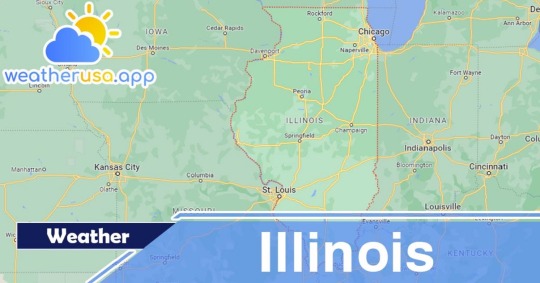
Climate of Illinois
See Weather Forecast for Illinois today: https://weatherusa.app/illinois
The geographical position and elongated north-south axis of Illinois result in significant regional temperature variations. Throughout the state, seasonal temperature fluctuations are pronounced, characterized by cold, snowy winters and hot summers, although the influence of Lake Michigan helps temper extremes. In the northern part of the state, mean winter temperatures hover around 22 °F (-6 °C), contrasting with around 37 °F (3 °C) in the south. Similarly, summer temperatures average at approximately 74 °F (23 °C) in the north and 80 °F (27 °C) in the south. Annual precipitation also exhibits a gradient, with around 34 inches (864 mm) in the north and 46 inches (1,170 mm) in the south. The length of the growing season varies across the state, ranging from 205 days in the south to 155 days in the northernmost counties.
See more: https://weatherusa.app/zip-code/weather-60026
https://weatherusa.app/zip-code/weather-60050
Illinois boasts distinct vegetational regions, primarily characterized by the tallgrass prairie in the northern and central areas and the oak-hickory forest in the western and southern regions. However, only small remnants of the original tallgrass prairie remain, with some areas undergoing restoration efforts. Notably, the Midewin National Tallgrass Prairie, located near Joliet, stands as the largest restored prairie in the state.
Historically, before European settlers arrived in the 17th century, oak-hickory forests were prevalent even in the northern regions of Illinois. However, the settlers, driven by the need for wood for fuel, construction, and the lumbering industry, extensively cleared forests, resulting in a significant reduction of forest cover. Presently, approximately 6,200 square miles (16,000 square km) of forests remain in Illinois, with Shawnee National Forest accounting for around 1,100 square miles (2,800 square km) of them.
See more: https://weatherusa.app/zip-code/weather-60078 https://weatherusa.app/zip-code/weather-60139
https://weatherusa.app/zip-code/weather-60148
Due to its geographic length, Illinois exhibits a unique blend of Northern and Southern plant life. This diversity is evident in the wide array of wildflowers and trees found across the state. Species such as white pines, tamaracks, walnuts, cypresses, and tupelos thrive in Illinois, representing a rich tapestry of flora that contributes to the state's ecological heritage.
Before 1800, Illinois was teeming with abundant wildlife, populating the prairies and forests with iconic species like bison, bears, wolves, mountain lions (pumas), porcupines, and elk. However, due to human activities and habitat destruction, these once-thriving populations dwindled and disappeared. Deer, for instance, went extinct in 1910, but efforts by the state department of conservation in 1933 saw the reintroduction of small herds, leading to the establishment of a growing deer population. By the early 21st century, the number of white-tailed deer in Illinois had surged into the hundreds of thousands.
While some species have experienced successful reintroduction efforts, others, like coyotes and foxes, have adapted to survive in woodlands, natural areas, and increasingly, urban environments. Game birds such as quail and pheasant, though not as plentiful as in the past, still inhabit the region, while waterfowl populations thrive during spring and fall migrations.
However, pollution has taken its toll on aquatic life, nearly wiping out many species of fish. Despite this, bullheads, carp, catfish, white and yellow bass, and walleye continue to thrive in Illinois' waters, offering opportunities for fishing enthusiasts and serving as vital components of the state's ecosystem.
See more: https://weatherusa.app/zip-code/weather-60163
https://weatherusa.app/zip-code/weather-60188
https://weatherusa.app/zip-code/weather-60190
The optimal times to visit Illinois are typically from April to mid-May in the spring and from September to October in the fall. During these seasons, the weather is generally more agreeable compared to the extreme heat of summer and the cold of winter.
Spring offers pleasant temperatures and vibrant blooms, making it an ideal time for outdoor activities. However, late spring and early summer can be wet, with occasional thunderstorms and the risk of flooding.
Autumn in Illinois is characterized by colorful foliage, comfortable mornings, and breezy evenings, providing a picturesque backdrop for exploration.
Conversely, late fall sees temperatures dropping rapidly, accompanied by cold and windy conditions.
Summers in Illinois are often hot and humid, with large crowds and higher prices for attractions. Thus, visitors may find spring and fall to be more budget-friendly options.
Overall, visitors can enjoy lighter crowds, pleasant weather, and scenic beauty during the spring and fall months, making them the preferred times to explore Illinois.
See more: https://weatherusa.app/zip-code/weather-60440
https://weatherusa.app/zip-code/weather-60446
0 notes
Text
Kishwaukee Headwaters Conservation Area
Kishwaukee Headwaters Conservation Area is a 277 acre preserve located just north of Woodstock, Illinois. The preserve protects the headwaters of the Kishwaukee River and is home to a variety of plant and animal species. The Kishwaukee River is a major tributary of the Rock River and provides drinking water for over 300,000 people in northern Illinois.HistoryThe Kishwaukee Headwaters Conservation Area was established in 2004 by the Openlands Project and the City of Woodstock. The preserve is open to the public for hiking, fishing, picnicking, and bird watching. There are several miles of trails that wind through the preserve and offer views of wetlands, prairies, and woodlands.FishingThe Kishwaukee Headwaters Conservation Area is a popular spot for fishing. The Kishwaukee River is stocked with trout each spring and is also home to bass, catfish, and panfish. A valid Illinois fishing license is required to fish in the preserve.HikingThere are over five miles of trails at the Kishwaukee Headwaters Conservation Area. The trails wind through prairies, wetlands, and woodlands and offer views of wildlife and native plants. Hikers are encouraged to take only photos and leave only footprints while visiting the preserve.PicnickingPicnic tables are available on a first-come, first-served basis at the Kishwaukee Headwaters Conservation Area. Picnickers are encouraged to pack out all trash and refrain from disturbing wildlife.Bird WatchingThe Kishwaukee Headwaters Conservation Area is home to a variety of bird species including warblers, woodpeckers, and hawks. Bird watchers are encouraged to bring binoculars and a field guide to help identify the different species.WildlifeThe Kishwaukee Headwaters Conservation Area is home to a variety of plant and animal species. White-tailed deer, red foxes, and coyotes are just some of the animals that call the preserve home. The preserve is also home to over 200 species of native plants.Visiting the Kishwaukee Headwaters Conservation AreaThe Kishwaukee Headwaters Conservation Area is open daily from dawn to dusk. The preserve is located at 1215 Dean St, Woodstock, IL 60098.
Please visit on of our regular supporters
Be sure to visit other attractions too!
1 note
·
View note
Text
More on worm invasion, regarding “savannification” and why the transition zone between boreal forest and temperate woodlands near the “northern central hardwoods forest ecoregion” of Minnesota, Wisconsin, and Michigan is a critical region for minimizing the damage from the northward expansion of non-native earthworms: Since non-native worms have been seemingly omnipresent and well-established across temperate North America - for several centuries, in many places - it’s worth noting that there is still potential future damage that might be mitigated by human action against worm expansion. Apparently, non-native earthworms can contribute significantly to devegetation of boreal and mixed forest near Minnesota’s Boundary Waters region, and the expansion of tallgrass prairie and oak savanna into previously boreal climates and forested landscapes. There’s a good reason that so much earthworm ecology research is based at schools in Minnesota, Michigan, and Ontario. So here are some more horrible map abominations I made with the beloved program M!crosoft Paint (the working-class GIS, lol) regarding the danger of worms in Great Lakes, Midwest, and boreal ecosystems.

-----
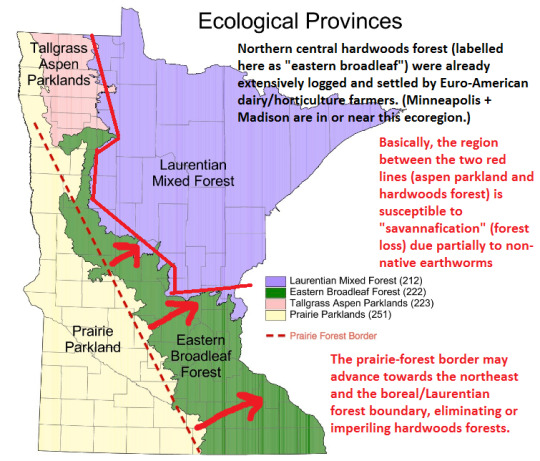
“European earthworms, principally the nightcrawler (Lumbricus terrestris), leaf worm (Lumbricus rubellus), and angleworms (Aporrectodea spp), are invading forests along the entire prairie-forest border, including boreal forests from Alberta to northern Minnesota, and hardwood forests from Minnesota to Indiana. The northern part of the prairie-forest border, from northern Wisconsin through Alberta, has no native earthworms.” [Source. An influential research paper. Lee E. Frelich and Peter B. Reich. “Will environmental changes reinforce the impact of global warming on the prairie-forest border of central North America?” Frontiers in Ecology and the Environment (2009).]
From the same article:
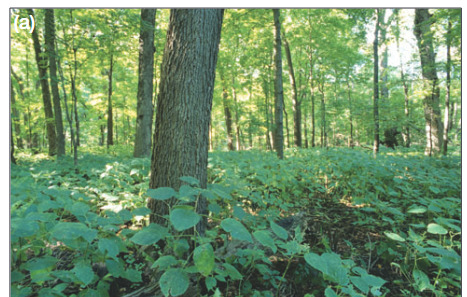

Caption, LE Frelich and PB Reich: “Forest change caused by earthworm invasion and deer grazing. (a) Intact forest of sugar maple, basswood, and red oak. (b) Forest with high deer population and earthworm invasion. Note the absence of tree seedlings, herbs, and duff on the forest floor.”
“Savannification” of North America’s northern prairie-forest border zone (in Minnesota, Manitoba, Saskatchewan, and Alberta) is soon expected to increase significantly due to the combination of climate crisis; industrial monoculture; white-tailed deer overabundance and overgrazing; and introduced exotic earthworm species. In other words, aspen parkland and northern central hardwoods forest, in the region where boreal biomes meet temperate biomes near Winnipeg, could be converted into savanna.
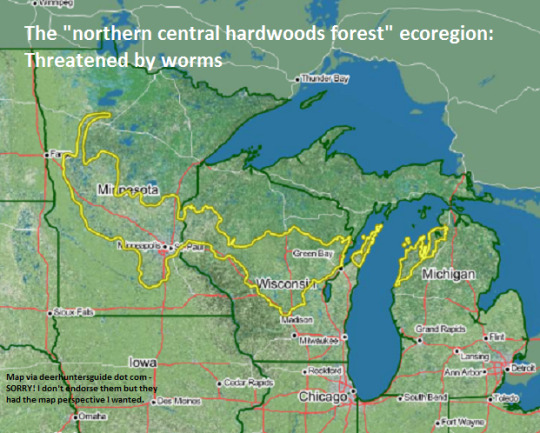
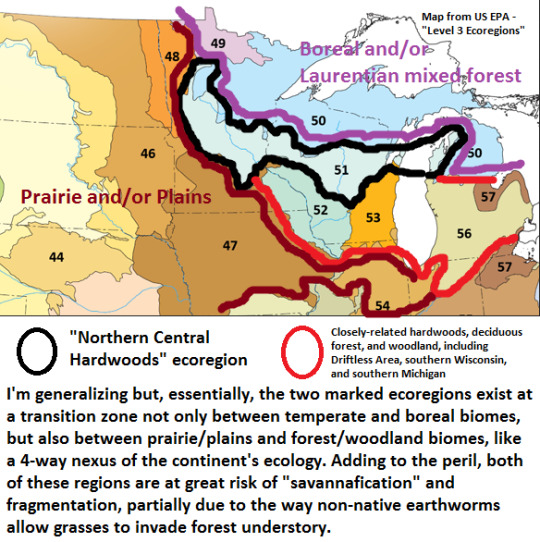
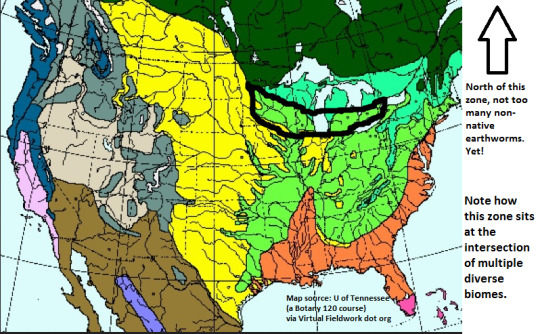

One major reason for forest loss and the encroachment of savanna is the death of the understory and forest floor of northern central hardwoods environments in Minnesota and Wisconsin; the way the non-native earthworms destroy understory plants allows the related encroachment of grasses in their place (creating a self-sustaining cycle and advancement of prairie/woodland replacing forest).
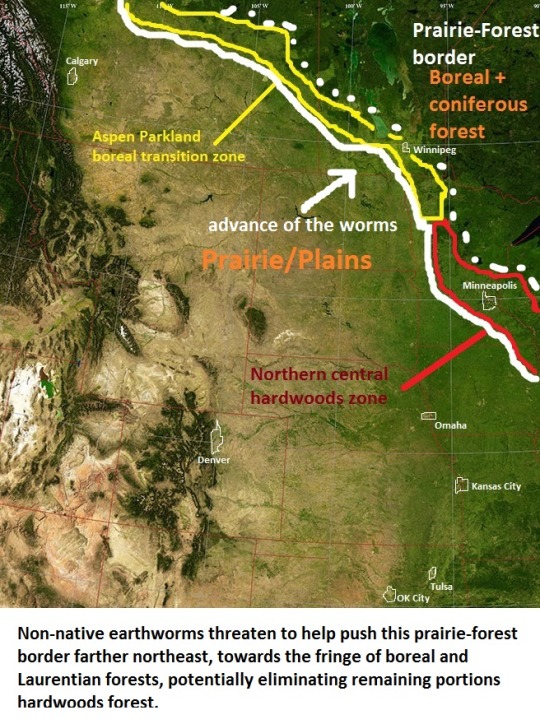
--

Guess I’d recommend this article, which deals with the boreal-temperate border and the prairie-forest border in Alberta, Saskatchewan, Manitoba, Minnesota, and Wisconsin.
The magic words you were waiting for:
[Free PDF]
2K notes
·
View notes
Text
Table Rock Lake Clans - List of Prefixes by Color
An exhaustive list of all possible prefixes in the Clans of Table Rock Lake
I may make a category list soon
Black
Ani - derived from the grove-billed ani
Ant - used for small cats
Bat
Bear - used for big cats - derived from the American black bear
Beetle
Black
Bramble - refers to the ripened fruit - derived from the blackberry bramble
Cherry - refers to the fruit - derived from the black cherry
Cicada - used for tabbies
Coal
Coot - derived from the American coot
Cormorant - derived from the double-crested cormorant
Cricket - used for solids or tabbies
Crow
Dark
Duck
Eel - used for long-bodied cats
Evening
Flint
Goose - used for black and white cats
Grackle - derived from the common grackle
Hornet
Loon - used for black and white tabbies - derived from the common loon
Mink - derived from the American mink
Night
Raven
Shade
Shadow
Skunk - used for black tabbies or black and white cats - derived from the striped skunk (tabby) and the spotted skunk (bicolor)
Smoke - used for tabbies
Soot
Spider
Starling
Storm
Swift - used for black and white cats
Turtle
Vulture - derived from the turkey vulture
Wasp
Weevil
Willow - refers to the bark - used for black longhairs - derived from the black willow
Brown
Bat
Bear - used for large brown cats - derived from the grizzly bear
Beaver
Beetle
Bison - used for big cats
Bittern - used for light brown tabbies with white - derived from the American bittern
Brown
Chicken - used for light brown spotted tabbies with white - derived from the prairie chicken
Chipmunk - used for small tabbies
Cricket - used for tabbies
Cougar - used for large light brown cats
Deer - used for light brown cats - derived from the white-tailed deer
Duck
Dust
Eagle - used for brown and white cats - derived from the bald eagle
Elk - used for large cats
Frog - used for spotted tabbies
Grebe - derived from the horned grebe
Grouse - used for spotted brown cats - derived from the ruffed grouse
Harrier - used for brown and white cats - derived from the Northern harrier
Hawk - used for brown and white cats - derived from the red-tailed hawk
Honey - used for golden-brown cats
Lizard - used for tabbies
Mantis
Mink - derived from the American mink
Moth - used for tabbies
Mouse - derived from the house mouse
Mud
Nightjar - used for spotted brown tabbies - derived from the common nighthawk
Oak - refers to the bark - used for tabbies - derived from the black oak
Oat - refers to the flower - derived from the wild oat
Pecan - used for tabbies - derived from the pecan tree
Quail - used for spotted and white tabbies - derived from the bobwhite quail
Rabbit - derived from the cottontail rabbit
Rail - used for dark brown spotted tabbies - derived from the king rail
Rat - derived from the brown rat
Rock
Rush - refers to the flowers - derived from the common rush
Snail
Soil
Sparrow - used for brown and white tabbies - derived from the house sparrow
Spider
Stone
Sycamore - used for big tabbies - derived from the American sycamore
Tawny - used for light brown cats
Teal - derived from the cinnamon teal
Thrush - used for spotted light brown and white tabbies - derived from the wood thrush
Turkey - used for big cats
Turtle
Walnut - refers to the nuts - derived from the black walnut
Weasel - used for brown and white cats - derived from the long-tailed weasel
Weevil
Wigeon - derived from the American wigeon
Wren - used for brown and white tabbies
Reddish-Brown
Alder - refers to the bark - used for tabbies - derived from the hazel alder
Cardinal - refers to the female of the species
Cedar - refers to the bark - used for tabbies - derived from the red cedar
Clay
Crane - derived from the sandhill crane
Ibis - derived from the white-faced ibis
Owl - used for spotted reddish-brown tabby and white cats - derived from the screech owl
Pheasant - used for spotted tabbies - derived from the common pheasant
Gray-Brown
Armadillo - used for tabbies
Bass
Birch - refers to the bark - derived from the river birch
Boulder - used for large cats
Coyote
Dove
Elm - refers to the bark - used for tabbies - derived from the American elm
Hare - derived from the American desert hare
Hickory - refers to the bark - used for tabbies - derived from the bitternut hickory
Kinglet
Lark - used for grayish-brown and white cats - derived from the horned lark
Lynx - used for spotted tabbies - derived from the bobcat
Magnolia - refers to the bark - used for tabbies - derived from the cucumber magnolia
Mole - derived from the Eastern mole
Pike - used for spotted tabbies
Pine - refers to the bark - derived from the shortleaf pine
Sand
Shell - used for tabbies
Vole - derived from the prairie vole
Warbler
Gray
Badger - used for tabbies - derived from the American badger
Bass
Bergamot - refers to the flowers - derived from the plant
Blizzard - used for spotted light gray tabbies
Boulder - used for big cats
Burdock - derived from the greater burdock
Carp
Chickadee - used for small gray and white cats - derived from the Carolina chickadee
Cinder
Coyote
Dark - used for dark gray cats
Dawn - used for light gray cats
Dove
Dusk - used for dark gray cats
Evening
Falcon - used for gray and white cats - derived from the peregrine falcon
Fog
Goose - used for gray and white cats
Granite - used for spotted tabbies
Gray
Gull - used for gray and white cats
Hail - used for light gray cats
Halcyon - used for dark gray or blue cats with a little white - derived from the belted kingfisher
Haze
Henbit - derived from the common henbit
Heron - derived from the great blue heron
Junco - derived from the dark-eyed junco
Larkspur - derived from the delphinium
Lichen - used for light gray tabbies
Lizard - used for tabbies
Lobelia - derived from the great blue lobelia
Loon - used for gray and white tabbies - derived from the common loon
Lynx - used for spotted tabbies - derived from the bobcat
Mallow - derived from the common mallow
Minnow - used for tabbies
Mint - refers to the flowers - derived from the hoary mountain mint
Mist
Mole - derived from the eastern mole
Moth - used for tabbies
Murk - used for dark gray cats
Nettle - derived from the American stinging nettle
Nuthatch - used for gray and white cat
Opossum - derived from the North American possum
Owl - used for large gray and white tabbies - derived from the barred owl
Pale - used for light gray cats
Pebble - used for small cats
Phacelia - derived from the purple phacelia
Phlox - derived from the woodland phlox
Pigeon
Pike - used for spotted tabbies
Raccoon - used for gray tabbies - derived from the common raccoon
Rain
Rock
Sage - derived from the wood sage
Shade - used for dark gray cats
Shale
Shell - used for tabbies
Shrew - derived from the northern short-tailed shrew
Shrike - used for gray and white cats - derived from the northern shrike
Silver
Slate
Sleet - spotted gray tabby
Smoke - used for tabbies
Soot - used for dark gray cats
Squirrel - used for gray and white cats - derived from the eastern gray squirrel
Steam - used for pale gray tabbies
Stone
Storm - used for dark gray cats
Sycamore - used for big light gray tabbies - derived from the American sycamore
Thalia - used for gray and white cats - derived from the powdery thalia
Thistle - derived from the common thistle
Titmouse - derived from the tufted titmouse
Trout - used for spotted tabbies
Vervain - derived from the blue vervain
Vetch - derived from the common vetch
Violet - derived from the birdsfoot violet
Wolf - derived from the gray wolf
Blue
Aster - derived from the flower
Blue
Bunting - derived from the indigo bunting
Chicory - derived from the common chicory
Gallinule - derived from the common gallinule
Glory - derived from the morning glory
Halcyon - used for dark gray or blue cats with a little white - derived from the belted kingfisher
Indigo - derived from the blue false indigo
Jay - used for blue and white tabbies - derived from the blue jay
Swallow - used for blue and white cats - derived from the tree swallow
Ginger/Red
Apple - refers to the fruit - derived from the wild apple
Ash - refers to the leaves - derived from white ash
Bergamot - refers to the flowers - derived from the plant
Blaze
Bramble - refers to the unripe fruit - derived from the blackberry bramble
Cardinal - refers to the male of the species
Dawn
Dusk
Ember - used for small cats
Evening - used for deep red cats
Fire
Fox - derived from the red fox
Ginger
Ginseng - derived from the American ginseng
Hawthorn - refers to the fruit - derived from the red hawthorn
Hazel - refers to flowers - derived from the Ozark witch hazel
Holly - refers to the fruit - derived from the meadow holly
Ivy - used for tabbies - derived from the poison ivy
Maple - refers to the leaves - derived from the red maple
Marigold - derived from the marigold
Morning
Lily - used for spotted tabbies - derived from the leopard lily
Oak - refers to the leaves - derived from the white oak
Persimmon - derived from the American persimmon
Plum - refers to the fruit - derived from the American plum
Pumpkin - refers to the fruit
Red
Spark
Sumac - refers to the leaves or berries - derived from the fragrant sumac (leaf) and the smooth sumac (berry)
Tanger - refers to the male of the species - derived from the summer tanger
Wasp - used for tabbies
Gold/Cream
Amber
Aphid - used for small cats
Apple - refers to the fruit - derived from the wild apple
Bee - used for tabbies
Blaze
Bolt
Daffodil - derived from the narcissus
Daisy - derived from the yellow ox-eyed daisy/black-eyed Susan
Dandelion - refers to the flower - derived from the weed
Dawn
Finch - derived from the goldfinch
Golden
Honey
Hornet - used for tabbies
Lightning
Locust - refers to the leaves - derived from the honey locust
Lotus - derived from the American lotus
Marigold - derived from the marigold
Morning
Mullein - refers to the flower - derived from the great mullein
Mustard - derived from the black mustard
Persimmon - derived from the American persimmon
Poppy - derived from the celandine poppy
Primrose - derived from the common evening primrose
Sand
Spark
Tanger - refers to the female of the species - derived from the summer tanger
Tansy - derived from the common tansy ragwort
Tawny
Velvet - derived from the velvet plant
Yellow
White
Aphid - used for small cats
Apple - refers to the flowers - derived from the wild apple
Avens - derived from the white avens
Bramble - refers to the flower - derived from the blackberry bramble
Blizzard
Bolt
Bright
Cherry - refers to the flowers - derived from the black cherry
Cloud
Clover - refers to the flowers - derived from the white clover
Cohosh - derived from the black cohosh
Cotton - refers to the seeds - derived from the upland cotton
Dandelion - refers to the seeds - derived from the weed
Egret - derived from the snowy egret
Flax - derived from the bastard toadflax
Frost
Gaura - derived from the gaura flowers
Hail
Haw - refers to the flowers - derived from the blackhaw
Hawthorn - refers to the flowers - derived from the red hawthorn
Hemlock - refers to the flowers - derived from the poison hemlock
Ice
Light
Lightning
Lotus - derived from American lotus
Milkweed - refers to the seeds - derived from common milkweed
Mint - refers to the flowers - derived from the hoary mountain mint
Mistletoe - refers to the berry - derived from the American mistletoe
Onion - refers to the bulb and flowers - derived from the wild onion
Orchid - derived from the Adam and Eve orchid
Pale
Parsley - refers to the flowers - derived from garden parsley
Plum - refers to the flowers - derived from the American plum
Rose - derived from the wild rose
Sage - derived from the wood sage
Sleet
Snow
Spark
Swan
White
Willow - refers to the catkins - used for white longhairs - derived from the black willow
Yarrow - derived from the common yarrow
Patched/Bicolor
Duck - used for black and brown cats
Eagle - used for brown and white cats - derived from the bald eagle
Falcon - used for gray and white cats - derived from the peregrine falcon
Grebe - used for brown and white cats - derived from Clark’s grebe
Harrier - used for brown and white cats - derived from the Northern harrier
Hawk - used for brown and white cats - derived from the red-tailed hawk
Iris - derived from the iris flower
Jaeger - used for black and white cats - derived from various jaegers
Jay - used for gray and white tabbies - derived from the blue jay
Nuthatch - used for gray and white cat
Merganser - used for black and white cats - derived from the common merganser
Patch - general bi/tricolor
Plover - used for black, gray, or brown and white cats - derived from the various species of plover
Scaup - used for black and white cats - derived from the greater and lesser scaup
Shrike - used for gray and white cats - derived from the northern shrike
Skunk - used for black and white cats - derived from the spotted skunk
Sparrow - used for brown and white tabbies - derived from the house sparrow
Swallow - used for blue and white cats - derived from the tree swallow
Thalia - used for gray bicolors - derived from the powdery thalia
Thrush - used for spotted brown and white tabbies - derived from the wood thrush
Weasel - used for brown and white cats - derived from the long-tailed weasel
Patterned
Speckle - used for spotted tabbies
Spotted - used for spotted tabbies
There’s others but writing them down would make this section bloated...
Tortoiseshell/Calico
Brindle - used for any tortie
Clay - used for brown torties
Copper - used for dark torties
Dapple - used for any tortie
Dawn - used for dilute torties
Dusk - used for dark torties
Eagle - used for darker torties - derived from the golden eagle
Ember - used for small torties
Evening - used for dark torties
Fox - used for diluted torties - derived from the gray fox
Fritillary - used for brown torties - derived from a tribe of butterfly
Grebe - used for dark torties - derived from the eared gribe
Kestrel - used for spotted red torties or blue torties - derived from the American kestrel
Morning - used for dark or dilute torties
Mottle - used for torties with little to no white
Oriole - used for darker torties - derived from the orchard oriole
Owl - used for brown torties - derived from the great horned owl
Pansy - used for any tortie - derived from the garden pansy
Patch - used for any calico
Pheasant - used for brown torties
Robin - used for brown torties - derived from the American robin
Skipper - used for brown torties - derived from the skipper butterfly
Squirrel - used for diluted torties - derived from the fox squirrel
Tawny - used for diluted brown torties
Toad - used for diluted torties
Towhee - used for darker torties with white - derived from the eastern towhee
12 notes
·
View notes
Photo
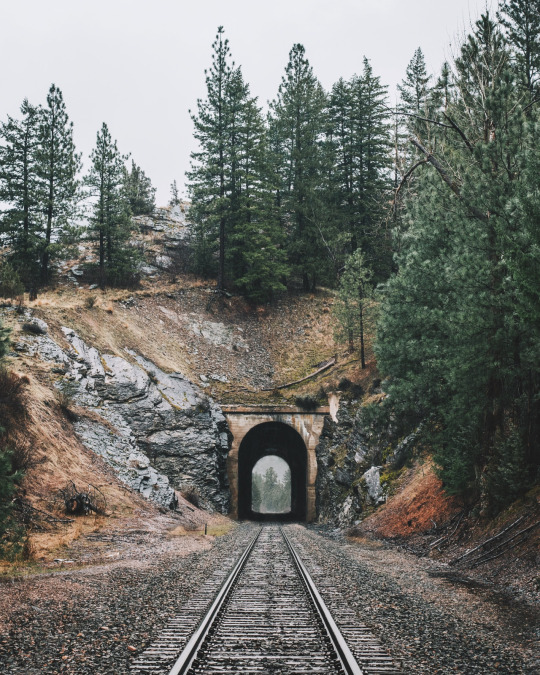
“There is a patience of the wild – dogged, tireless, persistent as life itself.”
― Jack London
I grew up on the northern edge of Appalachia and though my home town seemed quiet tidy and civilized I was later to learn when I went North to college that the places I had grown up - a town named after a novel by Sir Walter Scott and another larger place, a small city in the heart of Appalachia, that was the big city for the Hatfield and McCoy clan battles - were actually on the edge of the wild but not part of the wild. Our local vision looked to farms and libraries and automobiles and B-52 bombers flying at 45,000 feet leaving the white trails of their engines over head as a constant reminder of the twentieth century and its destructive civilizing power.
Growing up I did not know about Asperger's. It had been named but the name had not reached us and was the currency of psychiatrists which we new about but never saw. I did not know that my shyness, my sense of isolation and, looking back, my inability to be social was tied to that condition. All I knew was a loneliness that I fought through reading and long walks in the farm and woodland around those two towns, one a village and one a city in a rural part of America I did not know was known for its poverty. I did not feel poor and did not know I was as emotionally isolated as I was physically isolated.
In the mid 1960′s I was an active member of a boy scout troop. That was an effort by my family to engage me in some sort of social life. Unfortunately they did not understand that part of being a boy scout was an interest of the parents - an encouragement so to speak to achieve awards and merit badges. I readily did the learning and the skills for merit badges but never took the tests, being to shy or fearful and rebellious. I was much the failure as a Boy Scout even though I did manage to eek out a first class rank. No one warned my parents that scouting is social organization and required social skills that as a boy I did not have due to what I later learned was a combined impact of whatever psychiatric social dis-ease I had and their alcoholism which created a childhood PTSD. I memorized the Boy Scout handbook but simply added it to my lonely skill set as I wandered wood, stream, “holler” and field.
At some point in the mid nineteen sixties the scout troop was on a mission to plant trees in order to earn a forestry merit badge. We were actually doing a favor for the local agricultural extension agent on a property he own miles deep into the hills. So that day I learned the back breaking work of planting what would in time become a lofty pine wood lot which was the retirement fund for the agricultural agent. At least that is what I though at the time already well experience in youthful cynicism about the motives of other people, especially adults.
When we broke for lunch we were treated by an eight point buck white tail deer and a doe jumping the long abandoned fence rows. In the afternoon the troop was loosed upon the hills. Initially I tried to blend in but there was simply too much noise. When we found an old railroad line the troop went cackling and shouting off along it and I turned and went the other way aware that I could find my way back easily when the time came.
I arrived at a turning point in my life as a passed through a tunnel much like the one pictured. Once through the tunnel there was silence and a sense of the wild that all my ramblings around my towns had never given me. No car sounds, no voices or hum of people in the distance - just the smell of pine and hardwood and grasses on a hot day and a stillness that matched the stillness inside of me and on that day I stopped feeling lonely. Like Buck In Jack London’s Call of the Wild I felt the ancient primordial.
“Deep in the forest a call was sounding, and as often as he heard this call, mysteriously thrilling and luring, he felt compelled to turn his back upon the fire and the beaten earth around it, and to plunge into the forest, and on and on, he knew not where or why; nor did he wonder where or why, the call sounding imperiously, deep in the forest.” ― Jack London, The Call of the Wild
Later they sent out the troop as a search party. It was not much of a search in that the other boys knew I headed the direction opposite them and they found me sitting on the side of a pine covered hill simply listening and breathing, for the first time in my life feeling a real part of something. And needless to say when we got back to the tree farm I was thoroughly chewed and humiliated by the adults while the boys sniggered and, I supposed, feeling quiet superior in that they were seen as my rescuers. They already had me pegged as weird and an outsider anyway and equated outsider with incompetent.
But that was the day I no longer felt broken and out of place in the world, how I felt in society was another issue. That day however, I started gaining confidence that there was a place for me. How I ended up becoming a psychotherapist instead of a game warden working in the wild is a long story and much blame lies on my efforts and my therapists efforts to domesticate and socialize me. But that is another story.
When I saw the picture of the tunnel, so much like the one I passed through that day the story came flooding back.
I have come to believe that understanding the “healing” to PTSD and Asperger's ( which is no longer called Asperger's but has been medicalized into Autism - just as the writers of the DSM have de-medicalized aberrant and self destructive emotional conditions such as transvestitism) is a struggle between the need to integrate into a society that is in direct conflict with the basic needs of some who need to leave domestication behind and live in the clarity of the wild - a place where one can live without the cynicism that civilization requires to even exist.
There are some people, men and women, that the call of the wild, the clarity of silence, tooth and claw, of the shadow of danger and he heartbeat of the planet are required for peace of mind and soul. Domesticators will never understand this about their fellow humans. We really as a species are not that far from the foot of the glacier or the open game filled savannahs of our origins.
For some of us we are only truly alive in a place where we can feel the chill of death's shadow casting over us from that primordial silence, a place where the energy of life is not muddled by the cackling of boys, cars, B-52s and the million things human monkeys create to reassure themselves they are safe from that chill shadow.
“It was an old song, old as the breed itself - one of the first songs of the younger world in a day when songs were sad. It was invested with the woe of unnumbered generations, this plaint by which Buck was so strangely stirred. When he moaned and sobbed, it was with the pain of living that was of old the pain of his wild fathers, and the fear any mystery of the cold and dark that was to them fear and mystery. And that he should be stirred by it marked the completeness with which he harked back through the ages of fire and roof to the raw beginnings of life in the howling ages.”
― Jack London
9 notes
·
View notes
Photo
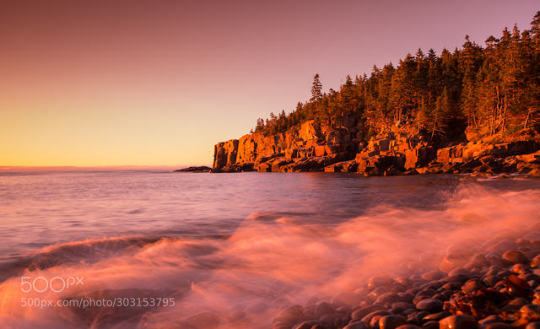
Sunrise at Otter Cliff, Acadia National Park, Maine by sunj99 // Acadia National Park is an American national park located in the state of Maine, southwest of Bar Harbor. The park preserves about half of Mount Desert Island, many adjacent smaller islands, and part of the Schoodic Peninsula on the coast of Maine. Acadia was initially designated Sieur de Monts National Monument by proclamation of President Woodrow Wilson in 1916. Sieur de Monts was renamed and redesignated Lafayette National Park by Congress in 1919—the first national park in the United States east of the Mississippi River and the only one in the Northeastern United States. The park was renamed Acadia National Park in 1929. More than 3.5 million people visited the park in 2017. Native Americans of the Algonquian nations have inhabited the area called Acadia for at least 12,000 years. They traded furs for European goods when French, English, and Dutch ships began arriving in the early 17th century. The Wabanaki Confederacy has held an annual Native American Festival in Bar Harbor since 1989. Samuel de Champlain named the island Isle des Monts Deserts (Island of Barren Mountains) in 1604. The island was granted to Antoine de la Mothe Cadillac by Louis XIV of France in 1688, then ceded to England in 1713. Summer visitors, nicknamed rusticators, arrived in 1855, followed by wealthy families, nicknamed cottagers as their large houses were quaintly called cottages. Charles Eliot is credited with the idea for the park. George B. Dorr, the "Father of Acadia National Park," along with Eliot's father Charles W. Eliot, supported the idea through donations of land, and advocacy at the state and federal levels. John D. Rockefeller Jr. financed the construction of carriage roads from 1915 to 1940. A wildfire in 1947 burned much of the park and destroyed 237 houses, including 67 of the millionaires’ cottages. The park includes mountains, an ocean coastline, coniferous and deciduous woodlands, lakes, ponds, and wetlands encompassing a total of 49,075 acres (76.7 sq mi; 198.6 km2) as of 2017. Key sites on Mount Desert Island include Cadillac Mountain—the tallest mountain on the eastern coastline and one of the first places in the United States where one can watch the sunrise—a rocky coast featuring Thunder Hole where waves crash loudly into a crevasse around high tides, a sandy swimming beach called Sand Beach, and numerous lakes and ponds. Jordan Pond features the glacially rounded North and South Bubbles (rôche moutonnées) at its northern end, while Echo Lake has the only freshwater swimming beach in the park. Somes Sound is a five-mile (8 km) long fjard formed during a glacial period that reshaped the entire island to its present form, including the U-shaped valleys containing the many ponds and lakes. The Bass Harbor Head Light is situated above a steep, rocky headland on the southwest coast—the only lighthouse on the island. The park protects the habitats of 37 mammalian species including black bears, moose and white-tailed deer, seven reptilian species including milk snakes and snapping turtles, eleven amphibian species including wood frogs and spotted salamanders, 33 fish species including rainbow smelt and brook trout, and as many as 331 birds including various species of raptors, songbirds and waterfowl. In 1991, peregrine falcons had a successful nesting in Acadia for the first time since 1956. Falcon chicks are often banded to study migration, habitat use, and longevity. Some trails may be closed in spring and early summer to avoid disturbance to falcon nesting areas. Recreational activities from spring through autumn include car and bus touring along the park's paved loop road; hiking, bicycling, and horseback riding on carriage roads (motor vehicles are prohibited); rock climbing; kayaking and canoeing on lakes and ponds; swimming at Sand Beach and Echo Lake; sea kayaking and guided boat tours on the ocean; and various ranger-led programs. Winter activities include cross-country skiing, snowshoeing, snowmobiling, and ice fishing. Two campgrounds are located on Mount Desert Island, another campground is on the Schoodic Peninsula, and five lean-to sites are on Isle au Haut. The main visitor center is at Hulls Cove, northwest of Bar Harbor
9 notes
·
View notes
Photo
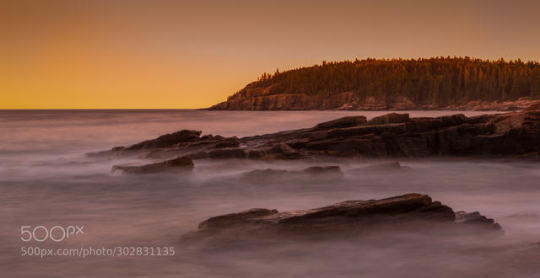
Title: Sunset Twilight at Acadia National Park, Maine
Artist: sunj99 ( http://bit.ly/2PkNwCz )
Uploaded Date: April 20, 2019 at 07:55AM
Description:
Acadia National Park is an American national park located in the state of Maine, southwest of Bar Harbor. The park preserves about half of Mount Desert Island, many adjacent smaller islands, and part of the Schoodic Peninsula on the coast of Maine. Acadia was initially designated Sieur de Monts National Monument by proclamation of President Woodrow Wilson in 1916. Sieur de Monts was renamed and redesignated Lafayette National Park by Congress in 1919—the first national park in the United States east of the Mississippi River and the only one in the Northeastern United States. The park was renamed Acadia National Park in 1929. More than 3.5 million people visited the park in 2017. Native Americans of the Algonquian nations have inhabited the area called Acadia for at least 12,000 years. They traded furs for European goods when French, English, and Dutch ships began arriving in the early 17th century. The Wabanaki Confederacy has held an annual Native American Festival in Bar Harbor since 1989. Samuel de Champlain named the island Isle des Monts Deserts (Island of Barren Mountains) in 1604. The island was granted to Antoine de la Mothe Cadillac by Louis XIV of France in 1688, then ceded to England in 1713. Summer visitors, nicknamed rusticators, arrived in 1855, followed by wealthy families, nicknamed cottagers as their large houses were quaintly called cottages. Charles Eliot is credited with the idea for the park. George B. Dorr, the "Father of Acadia National Park," along with Eliot's father Charles W. Eliot, supported the idea through donations of land, and advocacy at the state and federal levels. John D. Rockefeller Jr. financed the construction of carriage roads from 1915 to 1940. A wildfire in 1947 burned much of the park and destroyed 237 houses, including 67 of the millionaires’ cottages. The park includes mountains, an ocean coastline, coniferous and deciduous woodlands, lakes, ponds, and wetlands encompassing a total of 49,075 acres (76.7 sq mi; 198.6 km2) as of 2017. Key sites on Mount Desert Island include Cadillac Mountain—the tallest mountain on the eastern coastline and one of the first places in the United States where one can watch the sunrise—a rocky coast featuring Thunder Hole where waves crash loudly into a crevasse around high tides, a sandy swimming beach called Sand Beach, and numerous lakes and ponds. Jordan Pond features the glacially rounded North and South Bubbles (rôche moutonnées) at its northern end, while Echo Lake has the only freshwater swimming beach in the park. Somes Sound is a five-mile (8 km) long fjard formed during a glacial period that reshaped the entire island to its present form, including the U-shaped valleys containing the many ponds and lakes. The Bass Harbor Head Light is situated above a steep, rocky headland on the southwest coast—the only lighthouse on the island. The park protects the habitats of 37 mammalian species including black bears, moose and white-tailed deer, seven reptilian species including milk snakes and snapping turtles, eleven amphibian species including wood frogs and spotted salamanders, 33 fish species including rainbow smelt and brook trout, and as many as 331 birds including various species of raptors, songbirds and waterfowl. In 1991, peregrine falcons had a successful nesting in Acadia for the first time since 1956. Falcon chicks are often banded to study migration, habitat use, and longevity. Some trails may be closed in spring and early summer to avoid disturbance to falcon nesting areas. Recreational activities from spring through autumn include car and bus touring along the park's paved loop road; hiking, bicycling, and horseback riding on carriage roads (motor vehicles are prohibited); rock climbing; kayaking and canoeing on lakes and ponds; swimming at Sand Beach and Echo Lake; sea kayaking and guided boat tours on the ocean; and various ranger-led programs. Winter activities include cross-country skiing, snowshoeing, snowmobiling, and ice fishing. Two campgrounds are located on Mount Desert Island, another campground is on the Schoodic Peninsula, and five lean-to sites are on Isle au Haut. The main visitor center is at Hulls Cove, northwest of Bar Harbor
2 notes
·
View notes
Photo

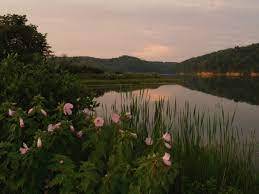
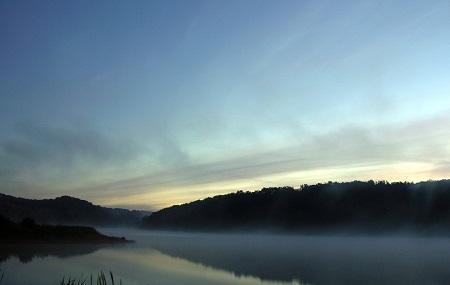
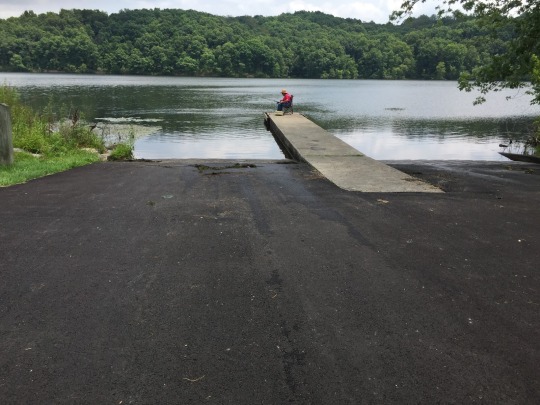
Wellston Wildlife Area
36098 Co. Hwy. 15A
Hamden, OH 45634
Wellston Wildlife Area is a 1446-acre state wildlife area located 1 mile north of Hamden. The property is in Clinton and Richland townships, Vinton County, approximately one mile north of Hamden. Lake Rupert lies along State Route 683 one-half mile north of the intersection with State Route 93.The topography includes gently rolling, reverting old fields, and woodland. The 973 acres of uplands surrounding the lake provide a variety of habitats for wildlife. Forty-five percent of the land is covered by woodland, 25 percent by brush land, and 30 percent by open land. The lake encompasses 325 acres, 25 percent of the total area. At conservation pool the lake is about two miles long with a maximum depth of 28 feet. Shoreline cover includes rooted aquatic vegetation, overhanging brush, felled shoreline trees, and submerged brush piles.
Acquisition of the Wellston Wildlife Area began in 1918. The property was acquired using multiple state funds. Lake Rupert was built in 1969 as a cooperative effort of the Ohio Department of Natural Resources (ODNR) and the city of Wellston to provide a water supply for the city and general public recreation. In 1979 the ODNR, Division of Wildlife, received ownership of the area from the city. Management work has included selective cutting and mowing of brush lands, maintenance of existing open fields, planting of shrubs, and the addition of squirrel nest boxes. In the lake many submerged fish attractors, consisting of brush piles and felled shoreline trees, have been added as fish habitat.
Lake Rupert has been stocked with and yields good catches of Northern pike, walleyes, largemouth bass, bullheads, bluegills, and channel catfish. The major game species are cottontail rabbit, ruffed grouse, fox and gray squirrels, white-tailed deer, and woodchuck. Woodcock and waterfowl appear mainly as migrant visitors, but some resident wood ducks can be found. Beaver are well established on the lake and all other furbearers common to the region occur on the area. A variety of songbirds, small mammals, reptiles, and amphibians also live on the area in association with the diverse mixture of habitat types.
0 notes
Text
How Well Do You Know British Wildlife?
Surprisingly, three out of 10 Britons do not know there is wildlife in Britain. But the larger British Isles are teeming with wildlife including land mammals, birdlife, and marine life. There is also a wonderful variety of small animals and insects including the lovable bumblebee. The good thing is that you can travel to any of the popular wildlife viewing sites in a short time seeing as it is that the UK is not a large country. The diverse landscape is a bonus attraction for the avid tourist. There are marshes, moor, cliffs and beaches to explore while looking for wildlife. All of it here in the UK.
What is some popular wildlife to see in the UK?
• Scottish wildcat
This feline is to be found in Northern England, Wales and Scotland. It is almost indistinguishable from the domestic cat and can crossbreed with it. The numbers are declining because of this diminishing breeding line.
• Pine Marten
This is a kin to weasel, and native to the Lake District. It is a nocturnal hunter and prefers to sleep in underground burrows.
• Red squirrels
This squirrel has ginger fur and taller years than the grey squirrel. The ginger fur changes to a grey shade in winter. These cute furry animals are declining in numbers as they are decimated by squirrel pox from their larger and more numerous kin, the grey squirrel. They number less than 200,000 of them.
• Skomer vole
This rodent is only found on Skomer Island in Wales. It is popular prey for the numerous predator birds on the island.
• Hedgehogs
These rodents are also on the decline due to habitat destruction and changing climates. They numbered over 30 million 50 years ago but now number about a million.
• Turtledoves
These beautiful birds have become very rare to see in the UK have declined in numbers by over 90%. The best time to see them is in the summer.
• Natterjack Toad
It has become very rare to hear this noisy amphibian, remaining only in small numbers in Norfolk and Lincolnshire.
• Slow Worm
This is a legless lizard that closely resembles a snake. It can be found in all parts of the UK.
• Bumblebees
These hairy black and yellow striped bees can be found hovering over flowering plants all over the UK. Unlike the aggressive honey bees, bumblebees make are generally harmless and their gentle buzzing will be heard in many fields, gardens and parks.
Bees in general are a particular passion of mine. I recently became a beekeeper and regularly purchase products from The Humble Bumble as they donate to various bee charities and organizations. I just received a new bee charm from them for my sister which i’m over the moon with!
What are the best places to see wildlife in the UK?
Cairngorms National Park, Scotland
The Cairngorms National Park in the Scottish Highlands is a land of rare beauty with a variety of wildlife and stunning landscapes. The varied landscape consists of forests, moorlands, mountain, and grass fields. The wildlife to be found here includes pine martens, red squirrels, Scottish wildcats, and golden eagles. There is also a variety of small mammals, rodents and innumerable insects including wasps, ants and bumblebees. Tourists can walk this place on foot in guided tours.
Blakeney Point, Norfolk
This is area is world famous for its attraction as a site to see marine bird life. It is a breeding ground for grey seals with over 2,000 grey seal pups coming to life each year from October to January. This area is part of Blakeney National Nature Reserve. An organized boat trip is the only way to get here during the breeding season.
The Isle of Mull, Scotland
The white-tailed eagle has been re-introduced in the UK on this isle. This is the biggest bird of prey native to the UK. It can be spotted swooping down on fish in the sea or soaring over the forests in search of small prey. Buzzards and golden eagles can also be sighted here. Marine attractions include porpoises and dolphins.
Falmouth, Cornwall
Pendennis point is on this location. This is one of the best spots in the UK to view marine wildlife, with breathtaking sea views as the background. There are also good views of Falmouth Bay and River Mal. It is a good spot for viewing bottlenose and common dolphins. Other marine attractions include shallow swimming sharks, grey seals and a variety of marine birds.
New Forest, Hampshire
This ancient woodland and heath is home to a herd of over 3,000 wild ponies that roam this area. Tourists can also spot all the deer species that are native to the UK. Other attractions include birds and snakes as well as insects including butterflies, dragonflies and bumblebees.
Kielder Forest, Northumberland
This is the home of the photogenic red squirrel whose numbers have dwindled dramatically. This forest is also home to bats, badgers, pipistrelle bats and other small mammals. Tourists can also see an osprey swooping down on these small prey from time to time.
Causeway Coast, Northern Ireland
This rugged coast landscape is a challenge to navigate but offers plenty to see in terms of wildlife. The cliffs are home to agile mountain hares and birds including peregrine falcons, and puffins. There are sharks, Atlantic grey seals and porpoises to be found in the sea. Bird watchers will find an interesting variety of marine birds including razorbills, auks and guillemot heading off to fish in the sea, homing in and heading to breeding grounds.
Shetland and Orkney Islands
These isles in the northernmost point of the UK offer plenty for the tourist if you can get there. The waters off the coast hold killer whales, minke whales, humpback whales, white-sided and white-beaked dolphins. There are also sea otters and a variety of marine birds. Bird watchers will especially find Skara Brae, Noss and Sumburgh areas rich with different bird species. These isles are also interesting archaeological sites.
Gilfach Nature Reserve, Wales
This is a great spot to see otters on the hunt for salmon. They come here every year from October to December to catch easy salmon prey at the waterfalls as the salmon swim upstream. These elusive water predators can also be spotted at other times of the year although it is a bit harder to do so. Early morning and sunset hours are the best for viewing.
Skomer Island
The hugely popular Atlantic Puffin is to be found in good numbers on this island off the coast of Pembrokeshire in western Wales. This is a popular destination with birders who come here for the rich bird life and photo opportunities. Seeing about 70,000 Manx Shearwaters make a landing in the dusk is a phenomenon that is one of the rarest in the world. There are also the photogenic Atlantic puffins who are happy enough to pose for photos as they are well-used to human presence.
Dorset
This is one of the most beautiful inhabited places in the UK. The meadows of Kingcombe are perfectly kept and preserved, with over 200 years of well-maintained fields, hay meadows and hedgerows. All of it is done naturally without pesticides which makes it highly attractive to insects and other small wildlife.
There is plenty to see if you take the time to stroll leisurely through the meadows. There are buzzing bumblebees, numerous scurrying insects and different birds that make a living of these small prey. The soothing landscape holds plenty to see and photograph.
2 notes
·
View notes
Photo
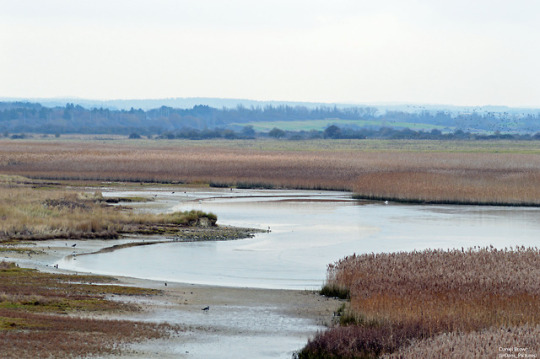
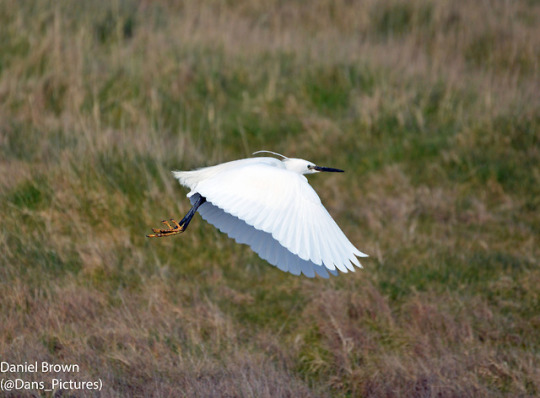


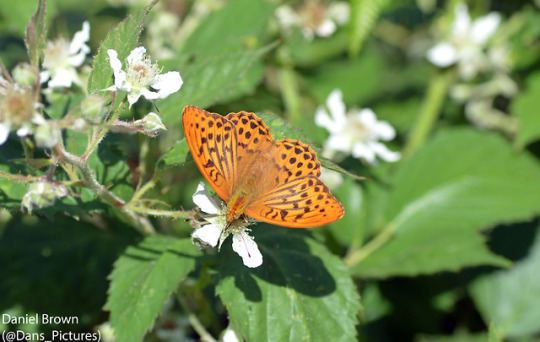
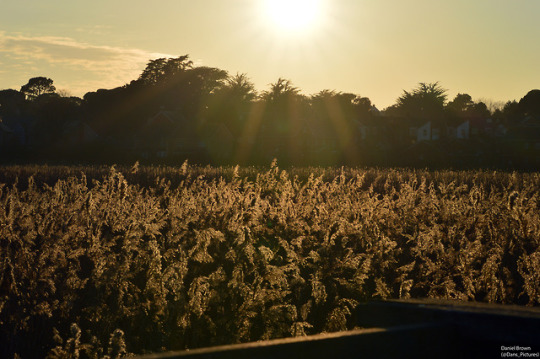
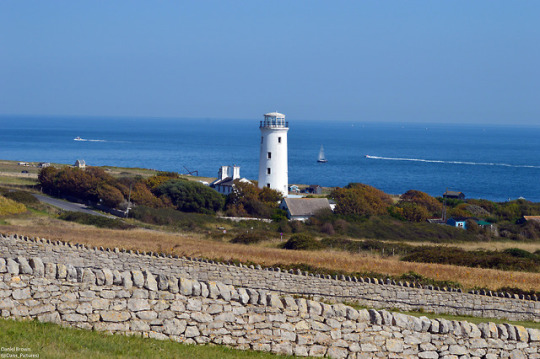

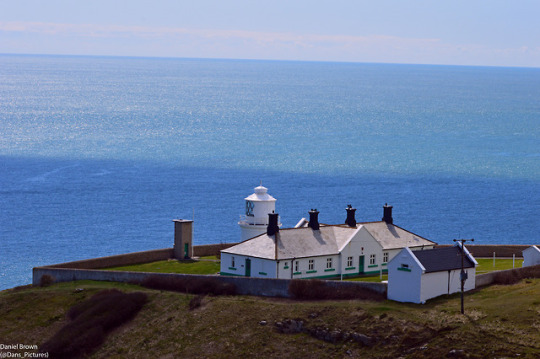

10 of my favourites nature reserves across the south of England…A post for English Tourism week
So at the weekend I had a funny little idea to do a post just saying some of my favourites places to watch nature and writing a bit about them just as something extra to post but I thought I probably already indicate to you a lot about the places when I go so didn’t do it. However yesterday I saw it was English Tourism Week and I used the hashtag on my Twitter Dans_Pictures with my pictures from a day off yesterday and it made me have the idea to do the post again as whilst in these explanations it will mostly talk about wildlife and landscapes and things from the perspective of my hobby it still celebrates different places I go to and enjoy my hobby which make me proud to be English in a year when I loved going to Scotland for the first time a wonderful wildlife and landscape country so I feel it’s what this week is all about. I will do two posts, this with 10 of my favourite nature reserves in the south of England and one this time tomorrow about 10 of my favourite places in my beloved New Forest national park. Therefore please be advised that perhaps my two favourite nature reserves Blashford Lakes and Lymington-Keyhaven feature in tomorrow’s post as they’re in the New Forest, this just helped vary that post and make room for others in this post. I would also just like to say these two posts only scratch the surface of the amazing nature reserves and New Forest walks that I know in this area and the lists aim to give something of everything with varied locations included so there are many of my favourites places to watch nature and see landscapes in this area that are not included. So below are bits of information of why I like these 10 nature reserves. This is in no particular order, the first five are in Hampshire and the others other counties, other than that just the order I thought of the places in and as always attached to this post is one of my pictures from each place which I indicate in the text for each. The explanations are designed to be pretty brief also!
Farlington Marshes
Farlington Marshes near Portsmouth shown in the 1st picture in this photoset which I took in January 2017 is a fantastic coastal nature reserve, famous for the amount of one of my favourite birds the Brent Goose that come there in the winter and things like Pintail, Bearded Tit, Short-eared Owl, Avocet and many more ducks and wading birds it’s one of the nature reserves I’ve known longest.
Hayling Island Oysterbeds
Near to Farlington the Hayling Island oysterbeds area where I took the picture of another of my favourite birds the Little Egret flying in 2015 the 2nd picture in this photoset is another area good for coastal birds, star species include Greenshank, again Brent Geese, Grey Plover and it’s a great place to see rarer birds out to sea such as Black-necked and Slavonian Grebe, Long-tailed Duck, Great Northern Diver and Velvet Scoter.
Titchfield Haven
Titchfield Haven shown in the 3rd picture in this photoset from this year was the first nature reserve I ever visited so it so important to me, it’s a lovely hide based nature reserve with things like Snipe, Lapwing, Avocet, Shelduck, Black-tailed Godwit and Oystercatcher key species, as well as Sanderling on the Hill Head sea front outside the reserve area. Many a rare bird has cropped up in this amazing reserve over the years too.
Martin Down
Martin Down on the Hampshire/Dorset/Wiltshire border is a place we discovered mostly to see butterflies in the spring and summer but is a beautiful farmland area and has some great birds too and has become synonymous of spring and summer for me. Key species include one of my favourite butterflies the Adonis Blue as photographed in the 4th picture in this photoset in 2015, Marsh Fritillary, Green Hairstreak, Yellowhammer, Skylark, Corn Bunting and Grey Partridge.
Bentley Wood
Bentley Wood is perhaps mostly a butterfly nature reserve for us with its sun kissed pathways hosting many of the woodland species, it really is a butterfly paradise for me as I’ve said before. Butterflies its good for include one of my favourites the Silver-washed Fritillary as I photographed in 2014 in the 5th picture in this photoset, Small and the normal Pearl-bordered Fritillary, White Admiral, Purple Hairstreak and of course the famous Purple Emperor which I am yet to see.
Radipole Lake
Radipole Lake in Dorset’s Weymouth for me is a world class urban location to watch wildlife hosting many great birds such as Cetti’s Warbler, one of my favourite birds the Sedge Warbler, Marsh Harrier and of course the famous Hooded Merganser which nobody knows how it got there and caused a lot of attention when it arrived. As much as that it’s just a top place to photograph birds and it’s beautiful too as shown in my picture last year of a sunlit reedbed the 6th in this photoset.
Portland Bill
Nearby Portland is also a fantastic location for many purposes, I love the coast and I grew up visiting Weymouth and Portland on our family holidays, the landscape in the 7th picture in this photoset that I took last August sums up how beautiful I think it is. I love watching four of my favourite birds the Guillemot, Razorbill, Fulmar and Gannet there as well as Little Owl and Shag.
Brownsea Island
Brownsea Island in Dorset is a brilliant tourist destination for many purposes also and I love going, its particularly famous for being a Red Squirrel refuge I got the picture of one running there in September 2013 the 8th in this photoset, Little Egrets this favourite bird of mine bred for the first time ever at Brownsea and the Spoonbills.
Durlston Country Park
Nearby Durlston is a place I see as an unsung part of the Dorest coast, its beautiful as shown in the 9th picture in this photoset which I took two years ago and hosts great flowers like Early Spider Orchid and wildlife such as Sika Deer, again seabirds Fulmar, Guillemot, Razorbill, Gannet and Shag and is a good place to see Peregrine Falcons.
Arundel WWT
This is a great reserve in West Sussex where I have enjoyed many amazing moments like photographing one of my favourite birds the Pochard in 2011 the 10th picture in this photoset. The collection birds are fantastic to photograph and the wild part of the reserve hosts Kingfisher, Water Vole, Little Grebe among other species well.
#english tourism week#new forest#south#hampshire#england#uk#wiltshire#dorset#sussex#tourism#wildlife#photography#world#beautiful
2 notes
·
View notes
Text
The Great Canadian Shoreline Cleanup “is now recognized as one of the largest direct action conservation programs in Canada. ”
“Litter can have negative impacts on wildlife and ecosystems, including ingestion or entanglement, environmental toxicity due to harmful chemicals in plastics. “
The George Genereux Urban Regional Park clean up is happening Saturday September 19 when the City of Saskatoon will kindly arrange to drop off a large Loraas disposal bin at the site where it will be handy from 9:00am to 5:00pm
Clean Up Volunteers at the Richard St. Barbe Baker Afforestaton Area, Saskatoon, SK 2016 Community Clean Up
White-Tailed Deer Fawn
Robert White, 2016 Clean UP Photographer, Personal Friend of Richard St. Barbe Baker, Baha’i representative, SOS Elms, Richard St. Barbe Baker Afforestation Area, south west sector, in the City of Saskatoon, SK, CA at the Volunteer Community Clean UP 2016
George Genereux Urban Regional Park is located in the West Swale, the current name of the Pleistocene era Yorath Island Glacial Spillway. The Yorath Island Glacial Spillway or West Swale was once a river connecting the Glacial North Saskatchewan river valley and Glacial Rice Lake with -at the time- South Saskatchewan Glacial Lake. This span of land is still conducting water through above ground wetlands, and underground water springs and channels between the North Saskatchewan River and the South Saskatchewan River. Keeping this area without pollutants and litter, also keeps the City of Saskatoon water clean and fresh. Cleaning the forest also restores this naturalize site started as a tree nursery in 1972, and it is now an urban regional park, and an amazing nature viewing site.
If anyone has the wherewithal to conduct a cleanup by themselves, that is also wonderful! The Meewasin cleanup has bins around the city and people can go out to George Genereux Urban Regional Park anytime between now and September 31! The Friends of the Saskatoon Afforestation Area and Meewasin can accommodate this wonderful individual endeavour and supply bags to you! How? [email protected] or 306.380.5368
On Saturday, September 19, George Genereux Urban Regional Park is about 1/2 mile square -147.8 acres- in size, so it should be easy to social distance. We will take COVID-19 precautions, to do everything we can during phase 4 of the province’s opening to keep all volunteers safe. We are even rustling up ways to give out volunteers free facemasks on Sat. Sept. 19 in case volunteers come closer than 6 feet! ����
On Saturday Sept 19 there will be prizes to win! Free facemasks, free refreshments, free plastic gloves & free trash bags for our clean up volunteers. Please let us know your intention to come out so we have enough supplies! [email protected] or 306.380.5368 Thanks!
We look forward to your help and assistance to restore this afforestation area to its naturalized wildlife habitat and enjoy this urban regional park!
Volunteers who helped with the Richard St. Barbe Baker Afforestation Area cleanup said that it was very rewarding seeing the difference to the semi-wilderness wildlife habitat, and they would do it again!
Please share the George Genereux Urban Regional Park pamphlet with your friends and family! Thanks!
For directions as to how to drive to “George Genereux” Urban Regional Park
For directions on how to drive to Richard St. Barbe Baker Afforestation Area
For more information:
Blairmore Sector Plan Report; planning for the Richard St. Barbe Baker Afforestation Area, George Genereux Urban Regional Park and West Swale and areas around them inside of Saskatoon city limits
P4G Saskatoon North Partnership for Growth The P4G consists of the Cities of Saskatoon, Warman, and Martensville, the Town of Osler and the Rural Municipality of Corman Park; planning for areas around the afforestation area and West Swale outside of Saskatoon city limits
Richard St. Barbe Baker Afforestation Area is located in Saskatoon, Saskatchewan, Canada north of Cedar Villa Road, within city limits, in the furthest south west area of the city. 52° 06′ 106° 45′
Addresses:
Part SE 23-36-6 – Afforestation Area – 241 Township Road 362-A
Part SE 23-36-6 – SW Off-Leash Recreation Area (Richard St. Barbe Baker Afforestation Area ) – 355 Township Road 362-A
S ½ 22-36-6 Richard St. Barbe Baker Afforestation Area (West of SW OLRA) – 467 Township Road 362-A
NE 21-36-6 “George Genereux” Afforestation Area – 133 Range Road 3063
Wikimapia Map: type in Richard St. Barbe Baker Afforestation Area
Google Maps South West Off Leash area location pin at parking lot
Web page: https://stbarbebaker.wordpress.com
Where is the Richard St. Barbe Baker Afforestation Area? with map
Where is the George Genereux Urban Regional Park (Afforestation Area)? with map
Pinterest richardstbarbeb
Facebook Group Page: Users of the George Genereux Urban Regional Park
Facebook: StBarbeBaker
Facebook group page : Users of the St Barbe Baker Afforestation Area
Facebook: South West OLRA
Twitter: StBarbeBaker
Please help protect / enhance your afforestation areas, please contact the Friends of the Saskatoon Afforestation Areas Inc. (e-mail / e-transfers )
Support the afforestation areas with your donation or membership ($20.00/year). Please donate by paypal using the e-mail friendsafforestation AT gmail.com, or by using e-transfers Please and thank you! Your donation and membership is greatly appreciated. Members e-mail your contact information to be kept up to date!
Canada Helps
1./ Learn.
2./ Experience
3./ Do Something: ***
What was Richard St. Barbe Baker’s mission, that he imparted to the Watu Wa Miti, the very first forest scouts or forest guides? To protect the native forest, plant ten native trees each year, and take care of trees everywhere.
“We stand in awe and wonder at the beauty of a single tree. Tall and graceful it stands, yet robust and sinewy with spreading arms decked with foliage that changes through the seasons, hour by hour, moment by moment as shadows pass or sunshine dapples the leaves. How much more deeply are we moved as we begin to appreciate the combined operations of the assembly of trees we call a forest.”~Richard St. Barbe Baker
“St. Barbe’s unique capacity to pass on his enthusiasm to others. . . Many foresters all over the world found their vocations as a result of hearing ‘The Man of the Trees’ speak. I certainly did, but his impact has been much wider than that. Through his global lecture tours, St. Barbe has made millions of people aware of the importance of trees and forests to our planet.” Allan Grainger
“The science of forestry arose from the recognition of a universal need. It embodies the spirit of service to mankind in attempting to provide a means of supplying forever a necessity of life and, in addition, ministering to man’s aesthetic tastes and recreational interests. Besides, the spiritual side of human nature needs the refreshing inspiration which comes from trees and woodlands. If a nation saves its trees, the trees will save the nation. And nations as well as tribes may be brought together in this great movement, based on the ideal of beautifying the world by the cultivation of one of God’s loveliest creatures – the tree.” ~ Richard St. Barbe Baker.
Advertisements
Occasionally, some of your visitors may see an advertisement here,
as well as a Privacy & Cookies banner at the bottom of the page.
You can hide ads completely by upgrading to one of our paid plans.
Upgrade now Dismiss message
Share this:
Click to Press This! (Opens in new window)
Click to share on Twitter (Opens in new window)
Click to share on Facebook (Opens in new window)
More
Customize buttons
Related
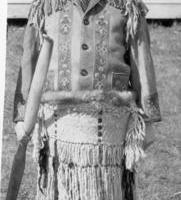
Traditional Naming Ceremony
In “B.T. Chappell”

Cree Word Search
In “flora”

Old Bone Trail
In “Goose Lake Trail”
Author: stbarbebaker
This website is about the Richard St. Barbe Baker Afforestation Area – an urban regional park of Saskatoon, Saskatchewan, Canada. The hosts are the stewards of the afforestation area. The afforestation area received its name in honour of the great humanitarian, Richard St. Barbe Baker. Richard St. Barbe Baker (9 October 1889 – 9 June 1982) was an English forester, environmental activist and author, who contributed greatly to worldwide reforestation efforts. As a leader, he founded an organization, Men of the Trees, still active today, whose many chapters carry out reforestation internationally. {Wikipedia} Email is StBarbeBaker AT yahoo.com to reach the Stewards of the Richard St. Barbe Baker Afforestation Area View all posts by stbarbebaker
Author stbarbebakerPosted on June 17, 2020Categories First Nation, Indigenous, June, June 21, Metis, National Indigenous Peoples Day, old bone trail, Richard St. Barbe Baker AFforestation ARea, UncategorizedTags Canadian National Railway, Canadian Northern Railway, CNoR, CNR, First Nation, GLLS, June 21, Metis, Midtown Plaza, National Indigenous Peoples Day, old bone trail, Qu’appelle Long Lake and Saskatchewan Railway, treaty 6 Edit “National Indigenous Peoples Day”
Leave a Reply
Post navigation
Previous Previous post: Traditional Naming Ceremony
Next Next post: Afforestation Areas Safety
Recent Posts
iNaturalist August 15, 2020
Tree Check Month July 31, 2020
Algae Blooms July 31, 2020
Bottle Drive in the Newspaper July 21, 2020
COVID Moth-er Event! July 21, 2020
Location
On Cedar Villar Road west of the City of Saskatoon Civic Operations Centre (Bus Barns) Richard St. Barbe Baker Afforestation Area is north of the land for Chappell Marsh Conservation Area. Wikimapia Map with afforestation area location: Google Maps with Off Leash area location pin at parking lot: Parking is at the South West Off Leash Dog Park Parking Lot (dog park is within the afforestation area). Best access is by vehicle. Coordinates 52° 06′ 106° 45′ Customizer.
Search for:
You are following Stewards of the Richard St. Barbe Baker Afforestation Area
You are following this blog, along with 367 other amazing people (manage).
Top Posts & Pages
The Saskatchewan Woodpecker
150 Happy Birthday, Canada!
What a little snow will do
Not the smallest piece of chaos
Paragon of the Beholder
A Pollinator Garden Abstract
Trembling Aspen
A Problem and Great Dilemna
Creating the Course
A Fog so Thick
Categories
Categories
Recent Posts
iNaturalist
Tree Check Month
Algae Blooms
Bottle Drive in the Newspaper
COVID Moth-er Event!
Interpretation in the forests
Survival
Safety in the Forest
Canadian Multiculturalism Day
Cree Word Search
Great Canadian Shorline Cleanup The Great Canadian Shoreline Cleanup "is now recognized as one of the largest direct action conservation programs in Canada.
#clean#Clean up#Community Clean Up#Free facemasks#Free plastic gloves#Free prizes#Free refreshements#Free trash bags#Friends of the Saskatoon Afforestation Areas Inc clean up#George Genereux Urban Regional Park Clean up#Great Canadian Shoreline Clean up#Great Canadian Shoreline Cleanup#Litterati app#Meewasin Clean UP#Saturday September 19#September 19
0 notes
Photo

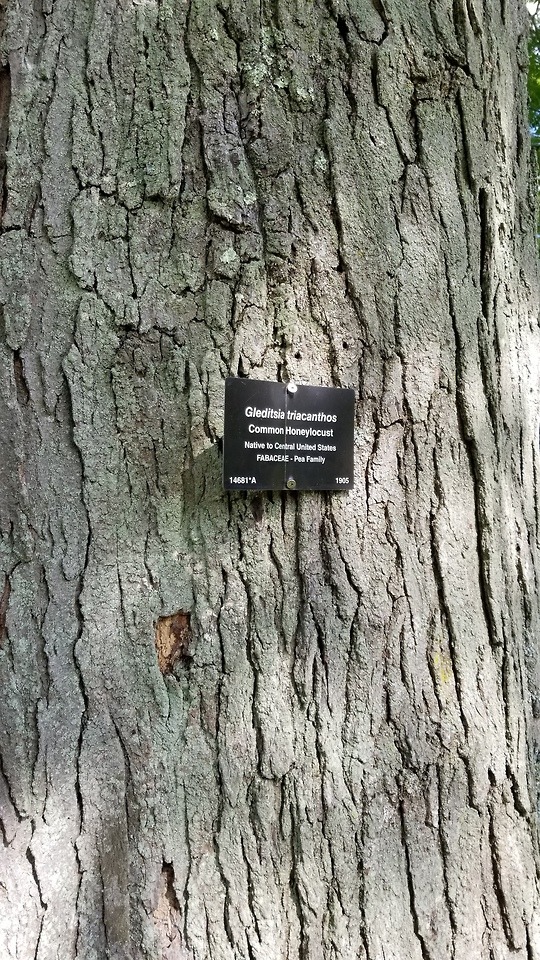
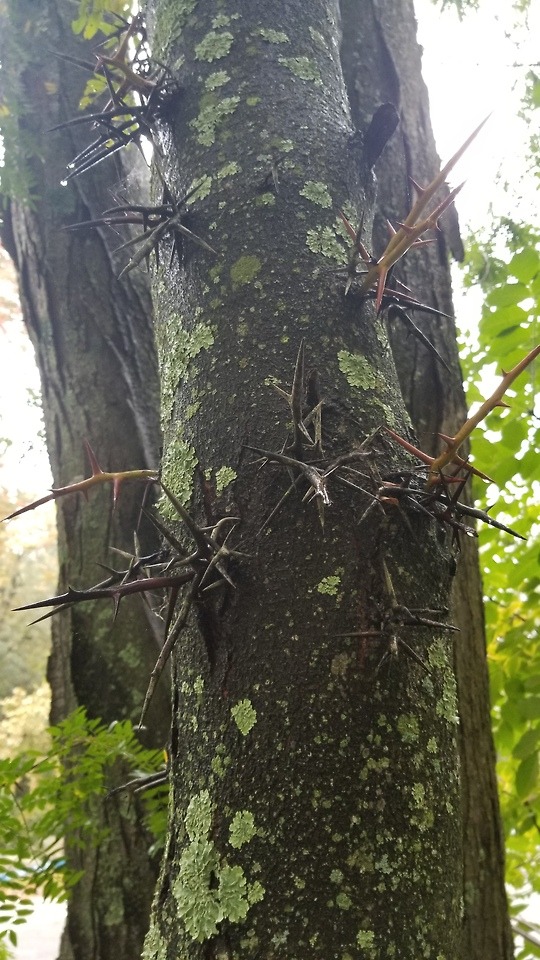
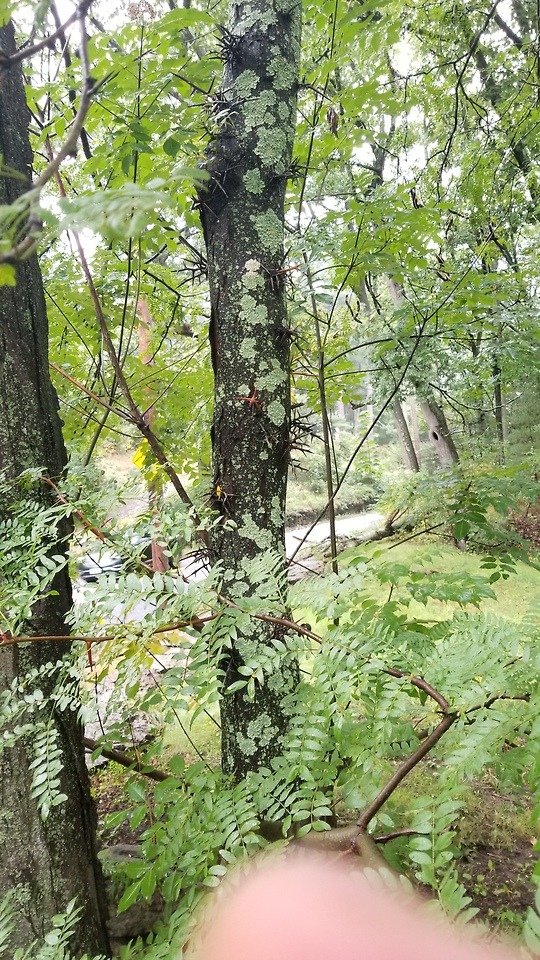
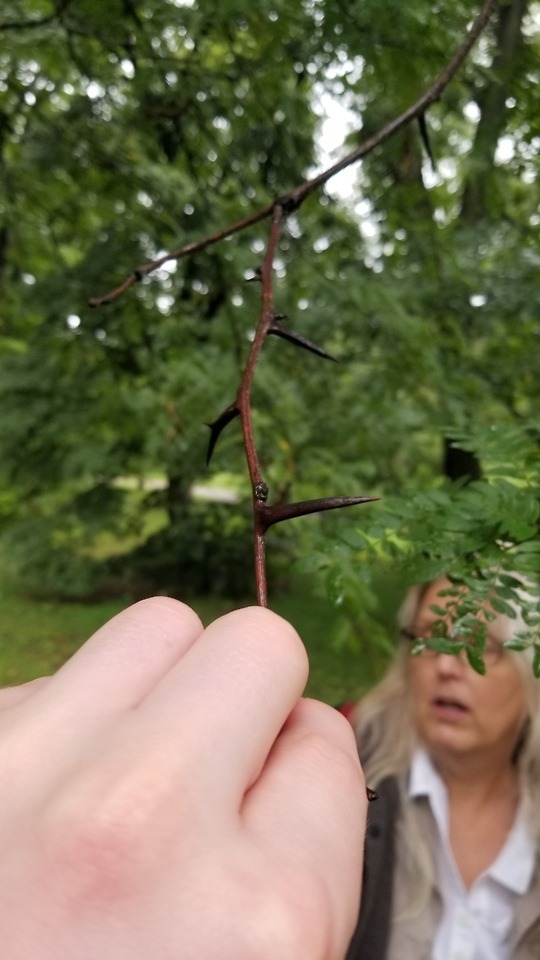


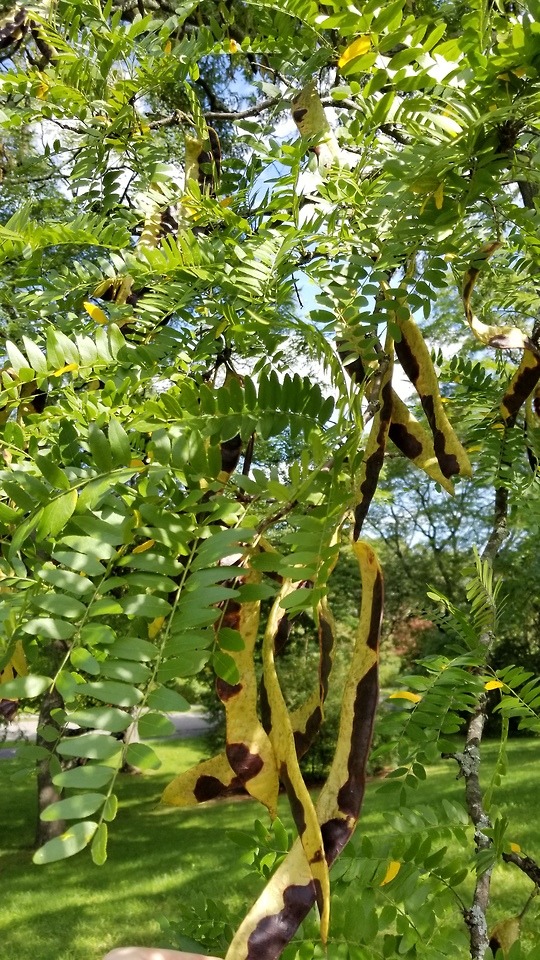
Honey Locust; Thorny Locust (Gleditsia triacanthos)
Mature Size - (60-80′ x 60-80′) Occasionally can grow over 120′ tall.
Shape and Form - A medium to large tree with a rounded, spreading crown.
Growth Habit - Fast growth rate.
Leaves - Bipinnately compound leaves typically have many small leaflets. Leaves are 6" to 8" long, bright green and glossy. Late to leaf out in spring. Autumn foliage is a showy, clear yellow.
Flowers - Inconspicuous, greenish yellow to greenish white flowers appear in racemes in late spring (May-June in St. Louis).
Fruit/Seeds - Flowers are followed by long, twisted and flattened, dark purplish-brown seedpods (to 18” long) which mature in late summer and persist well into winter. Seedpods contain, in addition to seeds, a sweet gummy substance that gives honey locust its common name.
Bark - Trunk and branches have stout thorns (to 3” long) that are solitary or three-branched. Dark gray-brown colored bark develops elongated, smooth, plate-like patches separated by furrows. Very attractive and distinct.
Region - USA native. Native from Pennsylvania to Iowa south to Georgia and Texas. Naturalized in other areas within its hardiness range, such as New England.
Hardiness Zones - (3-8)
Habitat/Growing Conditions - Honey Locust is adapted to a variety of soils and climates. It is common in both bottomlands and uplands, in the open or in open woods. Honeylocust occurs on well-drained sites, upland woodlands and borders, old fields, fencerows, river floodplains, hammocks, rich, moist bottomlands, and rocky hillsides. It is most commonly found on moist, fertile soils near streams and lakes. Best grown in organically rich, moist, well-drained soils in full sun. Tolerant of a wide range of soils. Also tolerant of wind, high summer heat, drought and saline conditions. Highly tolerant of flooding. Very adaptable.
Plant Community - Spontaneous Urban Growth
Eco-indicator - NA
Other info - See Moraine Honey Locust (Gleditsia triacanthos ‘Moraine’)
The ability of Gleditsia to fix nitrogen is disputed.
Gleditsia triacanthos has been introduced worldwide, and has naturalized in some places to the point of being a harmful invasive. It should also be noted that over-planting of this plant in some urban areas has lead to increases in local pest populations, thus increasing the plants’ susceptibility to pests and disease.
Relatively short-live plant, averages around 100-150 years.
Honey Locust has successfully been used as a wind buffer.
Honey Locust wood is dense, hard, coarse-grained, strong, stiff, shock-resistant, takes a high polish, and is durable in contact with soil. The wood is used locally for posts, pallets, crates, general construction, furniture, interior finish, turnery, and firewood. It is useful, but is too scarce to be of economic importance.
Pods are eaten by cattle, goats, white-tailed deer, Virginia opossum, eastern gray squirrel, fox squirrel, rabbits, quail (including northern bobwhite), crows, and starling. White-tailed deer frequently strip and eat the soft bark of young trees in winter; rabbits also consume bark in winter. Livestock and white-tailed deer consume young vegetative growth. Honey Locust is a source of pollen and nectar for honey.
Honey Locust, along with other species, can be planted for mast production on the margins of plots cleared and revegetated for wildlife. Honey Locust is planted into currently operating pastures and hayfields to provide high-protein mast for livestock (a management system termed browse agroforestry). Cattle do not digest the seeds and thus do not derive full nutritional benefit from consuming whole pods, but ground pods do provide a high-protein feed for cattle. Sheep do digest the seeds, and therefore obtain more of the available protein when consuming whole pods. The open canopy of the tree allows good growth of pasture grasses.
Current Nursery Status and Availability - Species plants are generally not sold in commerce today because the thorns and seedpods are considered to be significant liabilities. Instead, cultivars under the catchall Gleditsia triacanthos var. inermis are sold, which feature far fewer or no thorn and/or seedpods. Dirr lists several cultivars of this species in his 6th edition woody plants manual, some of which are listed below.
'Christie' (aka 'Halka’) - This sturdy-trunked form is known for its round-headed crown with less drooping branches. It will reach 40' tall and wide and rarely fruits.
'Impcole' (’Imperial’) - Unusual for its relatively dwarf mature size, this 35' tall tree has a compact spreading habit. It produces few pods and has very fine-textured foliage that turns yellow in fall.
'Moraine' - This selection was the earliest thornless form to be patented (in 1949) and widely introduced on the market. It is fruitless and forms a wide, spreading tree 40' tall and wider. Good pest resistance and yellow fall color ensure this plant's continued popularity.
'Shademaster' - This form is popular for its upright, symmetrical growth habit to 40' tall. It produces some pods and has good, deep green foliage. It also reportedly has very good drought tolerance.
'Skycole' (aka ‘Skyline') - A cold-hardy form with yellow fall color and few fruits, this selection is most notable for its unusual upright growth habit. It forms a broadly pyramidal tree 40' tall and wide. It makes a good street tree and is widely regarded as one of the finest forms available.
'Speczam' (aka ‘Spectrum') - Early spring bright yellow foliage is the main feature of this new form, which purportedly holds its golden hue later into the season than other gold-foliaged forms. The habit is rounded and 35' tall and wide.
'Suncole' (aka ‘Sunburst') - This a very popular tree noted for the new foliage, which emerges with a bright gold hue before fading to green. The plant reaches 35' tall and has an irregular habit with non-symmetrical branching. It is fruitless but supposedly susceptible to a canker disease. Susceptible to a number of insect pests.
http://www.missouribotanicalgarden.org/PlantFinder/PlantFinderDetails.aspx?kempercode=a871
https://www.fs.fed.us/database/feis/plants/tree/gletri/all.html
http://www.hort.uconn.edu/plants/detail.php?pid=194
https://plants.usda.gov/core/profile?symbol=GLTR
Dirr - “Manual of Woody Landscape Plants”
Wessels - “Reading the Forested Landscape”
#zone3#zone4#zone5#zone6#zone7#zone8#USA native#medium tree#large tree#autumn color#yellow autumn color#messy#tolerates poor soils#tolerates salt#tolerates drought#nitrogen fixing#tolerates wet soil#spontaneous urban growth
0 notes
Text
“Savannification” of North America’s northern prairie-forest border zone (in Minnesota, Manitoba, Saskatchewan, and Alberta) is soon expected to increase significantly due to the combination of climate crisis; white-tailed deer overabundance and overgrazing; and introduced exotic earthworm species. In other words, aspen parkland and northern central hardwoods forest, in the region where boreal biomes meet temperate biomes near Winnipeg, will be converted into savanna. This forest loss probably seems obvious to anyone interested in environmental studies/science, since aspen parkland and northern central hardwoods forests in North America are already characterized by pockets of savanna and prairie, so further encroachment of such open space biomes might be predictable; but, apparently, even dense boreal forest in western Ontario and Minnesota’s Iron Ranges - a relatively long distance away from grassland - is surprisingly susceptible to savannification.
A thing (sorry for lame quality):
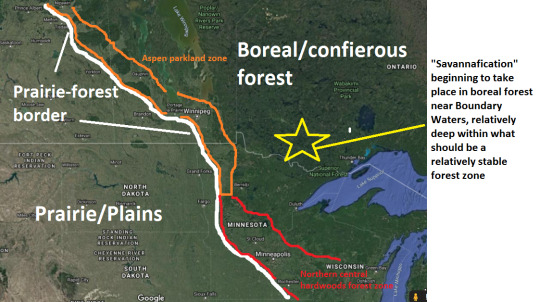
-
One major reason for forest loss and the encroachment of savanna is the death of the understory and forest floor of northern central hardwoods environments in Minnesota and Wisconsin. The loss of trillium, for example, is apparently due to the combined influence of overabundant white-tailed deer and exotic earthworms inadvertently working in tandem.
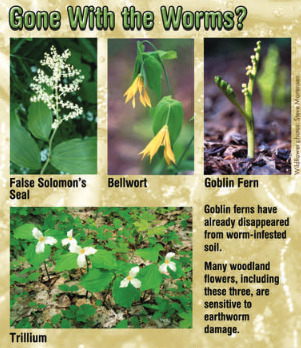
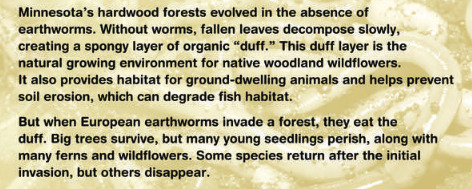
[From: Worm Watch at University of Minnesota’s Natural Resources Research Institute.]
“European earthworms, principally the nightcrawler (Lumbricus terrestris), leaf worm (Lumbricus rubellus), and angleworms (Aporrectodea spp), are invading forests along the entire prairie-forest border, including boreal forests from Alberta to northern Minnesota, and hardwood forests from Minnesota to Indiana. The northern part of the prairie-forest border, from northern Wisconsin through Alberta, has no native earthworms.” [Source.]
Here’s a lazy map I made, to try to convey how the northern prairie-forest border is not just a meeting place between forest and grassland, but also the meeting place between temperate ecosystems from the south and boreal ecosystems from the north. The aspen parkland zone is sort of like a boreal savanna along the transition between prairie and forest, while parts of the northern central hardwoods zone are like a temperate savanna. (Since the research on savannification in this region deals heavily with boreal tree species, I thought this would be useful. As always, there are some somewhat generalized boundaries here that some environmental scientists would argue about, but I said what I said.)
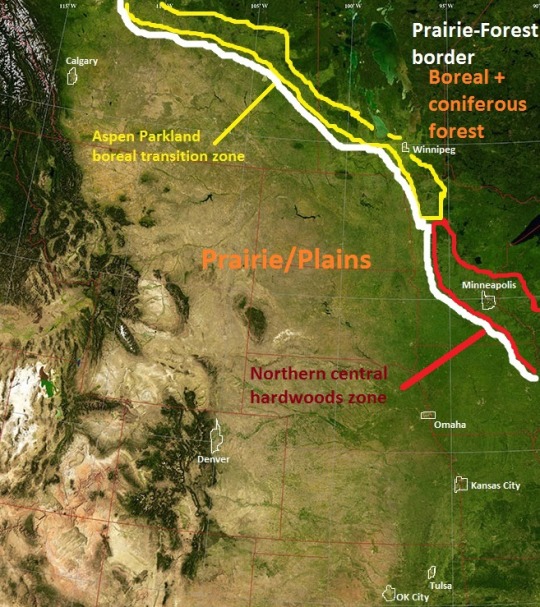
So, you could say that the region near Fargo, Bemidji, Grand Forks, and Winnipeg sort of functions like a 4-way intersection between boreal biomes (aspen parkland) of the north, temperate biomes (hardwoods) of the south, forests of the east, and grasslands of the west.
That prairie-forest border is expected to rapidly shift farther to the northeast. Meaning, essentially, that long-grass prairie will encroach on what is currently savanna, while savanna will encroach on what is currently aspen parkland and northern central hardwoods forest. But it’s not just the aspen parkland and temperate hardwoods that are expected to experience savannification. These two biomes are already composed of intermittent forested land and pockets of woodland/savanna/prairie. However, even dense boreal forest near Lake Winnipeg and the Boundary Waters is expected to experience savannification between 2035 and 2060.
-
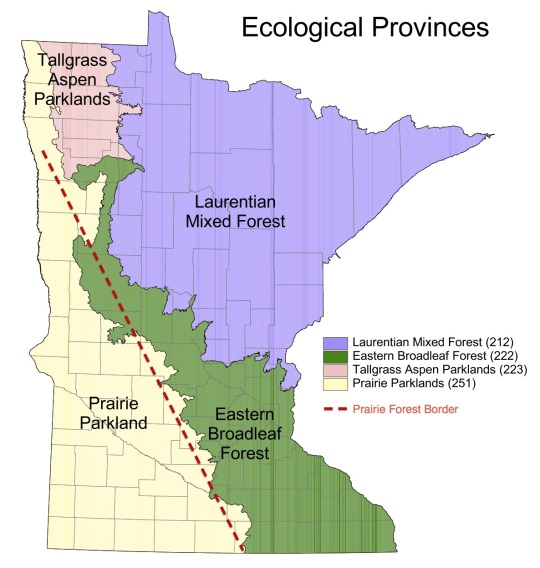
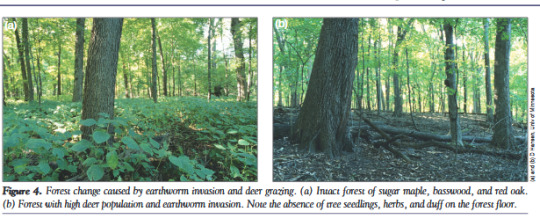
Here’s a locally famous and influential 2009 article published by Minnesota forest ecology specialist Lee Frelich in Frontiers in Ecology in the Environment, largely based on research in Minnesota which examined savannification not just of the long-grass prairie and aspen/hardwood border zone, but also examined the potential thinning of boreal forests along northern Lake Superior and the heavily-forested Boundary Waters area (forest that, ostensibly, should be well-protected from drying and the encroachment of prairie).
Excerpt from the article: Climate warming is predicted to lead to savannification of the forest near the northern prairie-forest border. [...] The relatively cool temperatures and frequent precipitation of the historic climate of the past several centuries, coupled with periodic crown fires for jack pine, have allowed boreal forest tree species, such as jack pine and black spruce, to exist from bogs to rocky hilltops, and northern hardwoods to spread across a soil gradient from clays to loamy sands. In a warmer climate, more differentiation among vegetation types is expected across soil types and slope positions. Mesic forests are expected to narrow their niche, “abandoning” drier sites, and if the density of forested sites becomes low enough, people may perceive that the location of the prairie-forest border has shifted.
-
Here’s a figure from the 2009 publication, explaining the influences on the expected shift in the prairie-forest border.
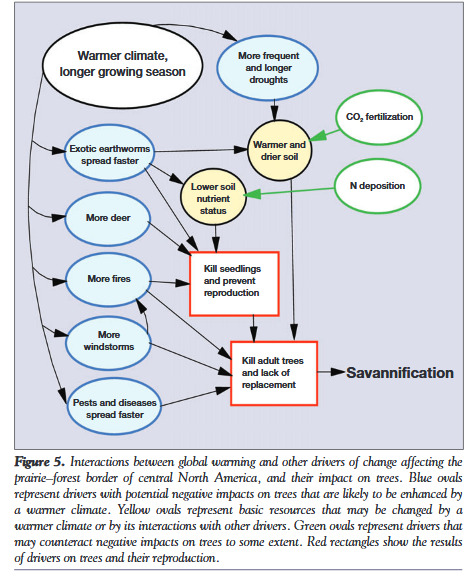
The author of this research - Lee Frelich - is director of the University of Minnesota’s Center for Hardwood Ecology. More interviews with Frelich; accessible content about northern central hardwoods ecology; and earthworms/deer overabundance can be found here.
35 notes
·
View notes
Text
Safari Spotlight
Snakes in the Grass

Safari West is home to much more than the exotic animals in our collection. The preserve sits on 400-acres of pristine Mayacamas mountain habitat and our giraffes and cape buffalo wander within expansive oak woodlands. Stunning red and green manzanita, and smooth-trunked madrone dot the property, and cottonwoods shiver in the breeze, scattering fluffy seeds across our acreage. The property supports all manner of local wildlife as well, from the turkey vultures that sun on our south-facing slopes each morning, to the ever-present deer, to the river otters which seem to reappear from nowhere each autumn to fish and frolic in Watusi Lake.
Most of the time, our guests are excited by sightings of local fauna. Deer are always fun to spot in the wild and some of the less common animals, like the turtles, otters, hawks, and herons fascinate as well. Every so often we spot a true show-stopper like the occasional soaring bald eagle or stalking bobcat.
There are a few animals however, that when we encounter them, elicit not excitement, but fear and anxiety. If one slithers across the road in front of a truck, the usual responses range from squeals to screams. Sometimes, our guests want us to kill these sinuous creatures. On the whole, there just doesn’t seem to be a whole lot of love for snakes.
There are many, many species of snake to be found in this state, but today we’re only going to look at four. These are the four species most likely to appear on a safari tour and we’re going to talk about them because they’re amazing and beautiful creatures who deserve our admiration and respect rather than our revulsion and fear.
First up, let’s talk about garter snakes. There are several species of garter snake in our area, and telling them apart can be a little tricky (outside of color and pattern, there aren’t a whole lot of differentiating features on your average snake). For the most part, garter snakes are easy to identify based on three primary characteristics: they’re relatively small, they tend to be darkly colored, with long white or yellow striping, and they can move really, really fast.
In fact, many garter snake encounters wind up being little more than glimpses of black and yellow as the snake disappears through the grass beside a pond or stream. While not restricted to riverbanks, they are most frequently found in that kind of habitat and this probably has something to do with their preferred choice of prey. While they will eat virtually anything they can overpower, their small size means that for the most part, they stick to slugs, worms, frogs and tadpoles, and of course, the occasional rodent.
Garter snakes are among the least threatening of the local snake species. While they will certainly defend themselves if they feel threatened, their first response is always to flee the area.
In fact, that’s true of virtually all snake species including the next on our list, the California kingsnake. You may have heard the old snake-related rhyme, “red and yellow, kill a fellow. Red and black, venom lack.” There are about thirty different versions of this old mnemonic, but the message conveyed is the same throughout. If you’re looking at a red, black, and yellow banded snake, it’s probably either a kingsnake or a coral snake and which color borders which can tell you what kind. Kingsnakes are universally non-venomous while coral snakes are, and that wizened old rhyme came about so people would know whether or not what they were looking at had the capacity to kill them.
You can go ahead and disregard that rhyme if it’s something you’ve been living by. First of all, while it’s mostly true in the US, it is patently untrue south of the border and there are exceptions here as well. Secondly, one of the kingsnake species found in Sonoma County, completely lacks the red band and is a less flamboyant yellow-and-black-banded animal. Also, as a general rule, snakes in the wilderness are best appreciated at a distance and with respect, regardless of whether or not they could be venomous.
You are probably less likely to stumble across a kingsnake in the wild than the other snakes under discussion, if only because they’re very reclusive creatures. They like to hide out in the leaf litter or in rotting logs; generally staying out of sight as much as possible. If you do encounter one, you should know that alongside their absolutely beautiful coloration, the kingsnake is also relatively immune to rattlesnake venom. Care to venture why that might be?
Yes, kingsnakes are what we call “ophiophages,” meaning they eat other snakes, and rattlers are definitely on the menu. They accomplish this through constriction. Like the famous anaconda, the colorful kingsnake grabs its prey and wraps its strong body around it; squeezing it tightly enough to stop the flow of blood.
If you see a kingsnake out on safari with us or in your own backyard at home, leave it alone, it’s keeping the mice and rat population down, and helping keep the rattlers away at the same time.
Another local species that has a strange relationship to rattlesnakes is the ubiquitous gopher snake (If you, like me, grew up in the central valley, you may know them as bull snakes). The species looks very similar to our Northern Pacific rattlesnakes. They’re roughly similar in size and coloration and both present with patterned skin; something akin to brown or grey diamonds laid over tan. Further confusing the two species, the gopher snake will coil when threatened and flail its rattle-less tail while hissing. Being mistaken for a rattlesnake by a hungry predator can be a great way to stay alive. Unfortunately, exhibiting this rattlesnake-like behavior to startle and sometimes shovel-bearing humans get a lot of innocent gopher snakes killed.
Here’s a tip. If you see something that looks like it could be a rattler in the wild, there are a few key features to look for. First, while a gopher snake’s head will be wider that its neck, it won’t have the distinctive arrowhead shape of a rattlesnake’s. Second, rattlesnakes have very girthy, heavy bodies with a high, raised backbone, while gopher snakes remain relatively slender along their length. Third, and easiest to check: does it have a rattle? If it does, that’s definitely a rattlesnake.
Be aware that just like the tails of lizards, rattles can break off. Just because a snake doesn’t have a rattle doesn’t always mean it’s not a rattlesnake. Again, appreciating from a distance is the best bet for all parties.
This brings us to our last snake of the day, and the one most people are either excited or terrified to meet: the rattlesnake. While there are many species of rattlesnake slithering around these United States, only one can be found in Sonoma County. The Northern Pacific rattler is a beautiful animal with an amazing set of adaptations. Their famous (or infamous) patterned skin makes them difficult to see in the leaf litter, while the pits from which pit vipers get their name make it virtually impossible for their prey to hide. The pits in question allow the snake to detect body heat, which makes them superb nighttime hunters. Even on the blackest of nights, any warm-blooded animal will be in full view for the patient rattlesnake.
Once they’ve got a target, they simply need to strike and back away. Unlike the kingsnakes which have to restrain and constrict their dinner, the rattlesnake simply strikes once, injects a dose of its potent venom, and backs off. The animal (usually a rodent) will flee, but it’s only a matter of time before the venom kills it. In the meantime, the rattlesnake need only follow the scent of its victim. By the time it arrives, the struggle will be over and there’ll be nothing left to do but eat.
Quite often when our guides encounter a rattlesnake of the trail, the guests shriek and shift in their seats. It’s not uncommon to have somebody ask the guide to run the snake over (which of course they never do). It’s important to remember that while rattlesnakes can be very dangerous to us humans, it’s almost universally our fault when something goes wrong.
They have no interest in us. We’re too large to eat and so big and loud that we inevitably scare off anything the snake might be hunting. Anytime a rattler encounters a human, it wants one thing and one thing only: to get away. Rattlesnake bites are actually fairly uncommon and fatalities even more so (you’re five to six times more likely to be killed by lightning than by a snake bite). Well over half the time that humans are bit by rattlers, no venom is injected (again, why try to kill you? You’re too big to eat. They just want you to go away). It’s also interesting to note that the majority of rattlesnake bites happen to men, usually between the ages of 18 and 40, and about 80% of the time, alcohol is involved. Taking a look at those statistics, it’s not hard to imagine that most of those snakes made a good faith effort at getting away before they decided to strike at somebody.
All of this is to say that although snakes can be creepy and scary (and in one case, fairly dangerous), we really like and appreciate them here at Safari West. All of these species, from the garter snake on up, are playing a part in keeping a variety of pests under control. In turn, these snakes frequently become meals for a few other species we love to see; specifically our red-tailed hawks.
That said, we do have some snake-control policies in place here at Safari West. For example, we try to keep them away from the tent-camp and guest areas. The roving flock of guinea fowl are a big help in that regard. On the rare occasion that we do find a snake on the lower grounds, we simply collect them and relocate them up the hill into one of the large enclosures where they can do some good.
Next time you visit Safari West, keep an eye out. As we drive along the shores of Lake Watusi, or climb the slope of Christmas Hill, you may just see one of these unique and impressive reptiles hard at work. If you’re the squeamish type, try your best to fight that reaction, relax, and observe. You’ll be rewarded with a rare opportunity to watch an amazing player in the Sonoma County ecosystem in action.
1 note
·
View note